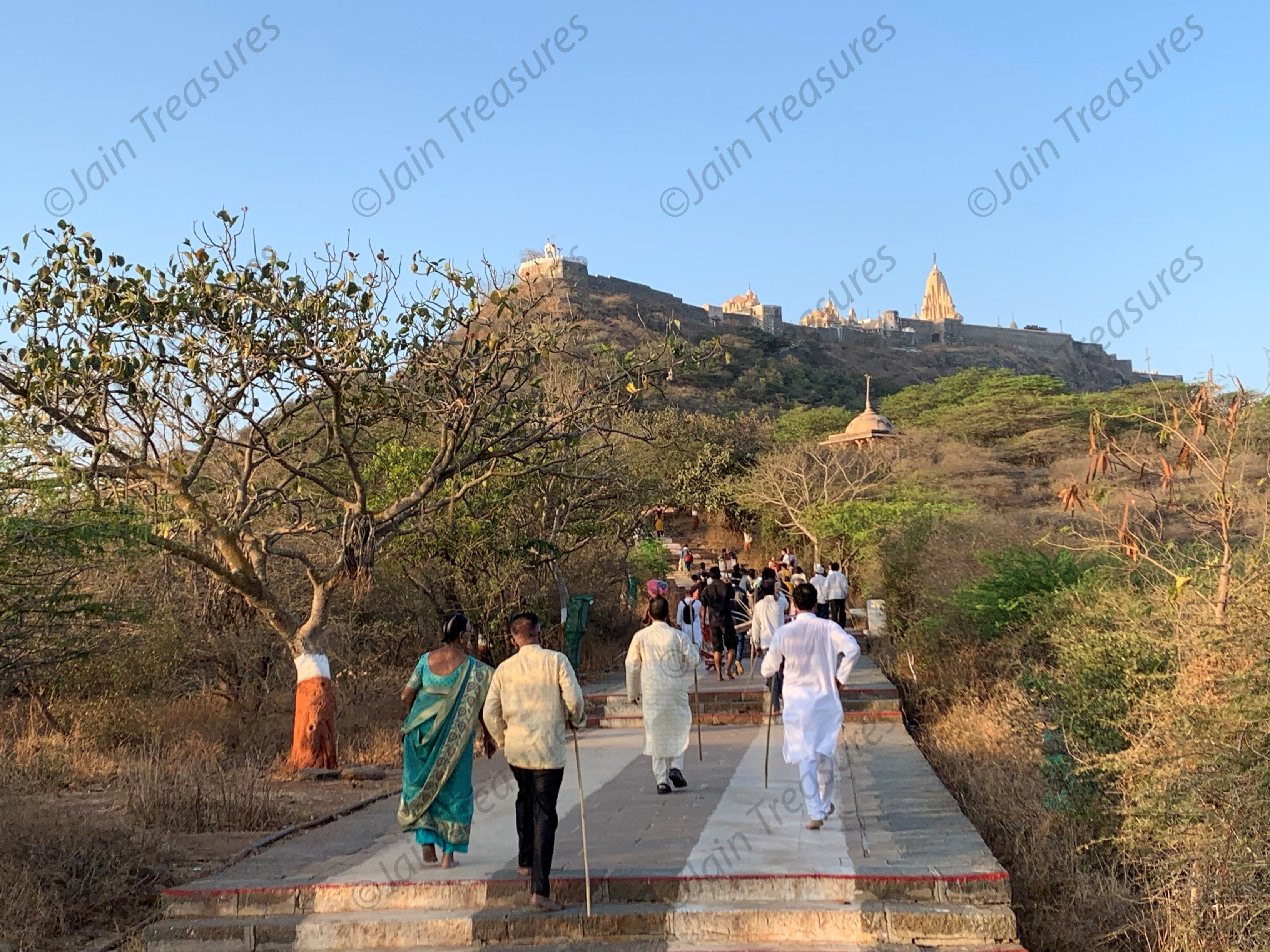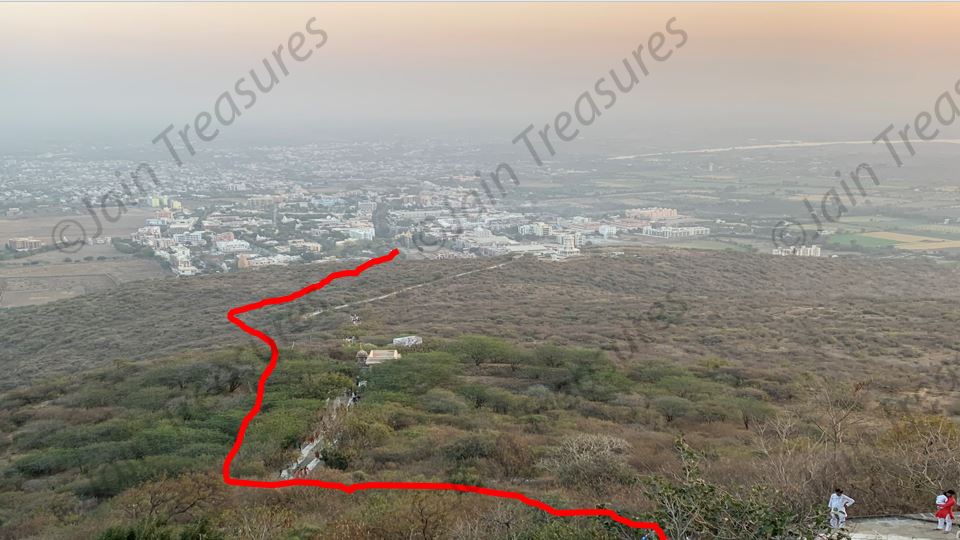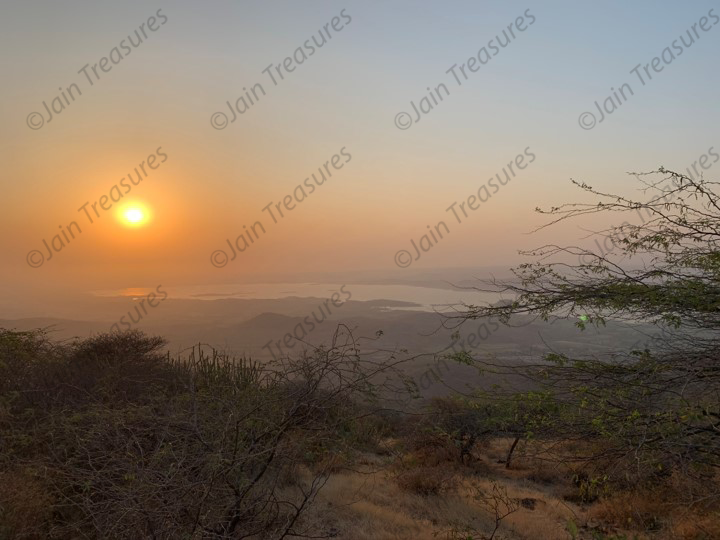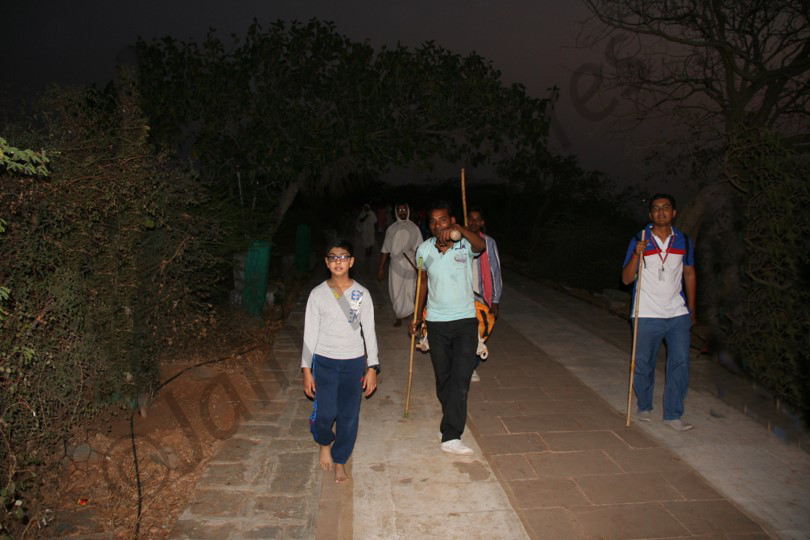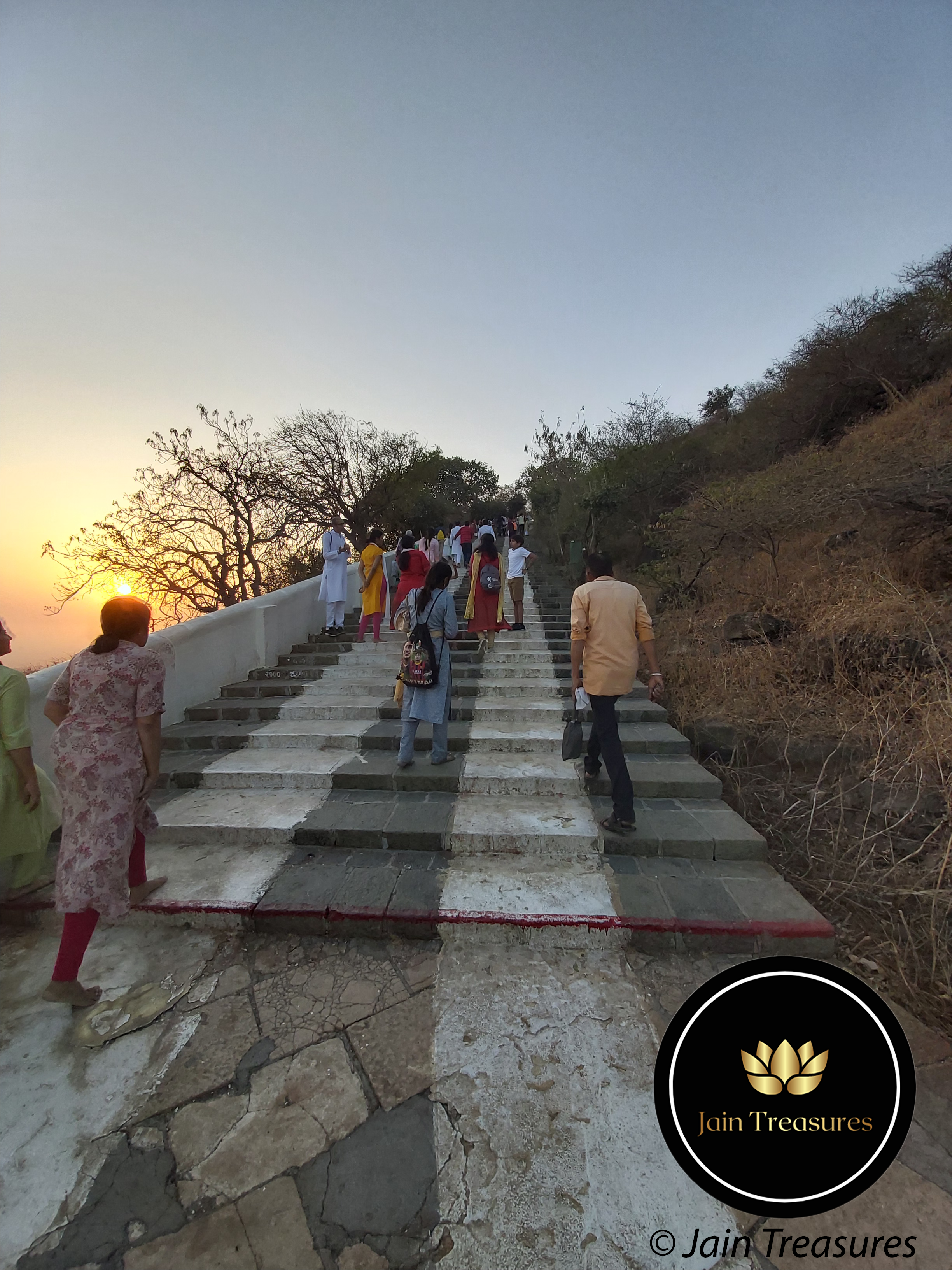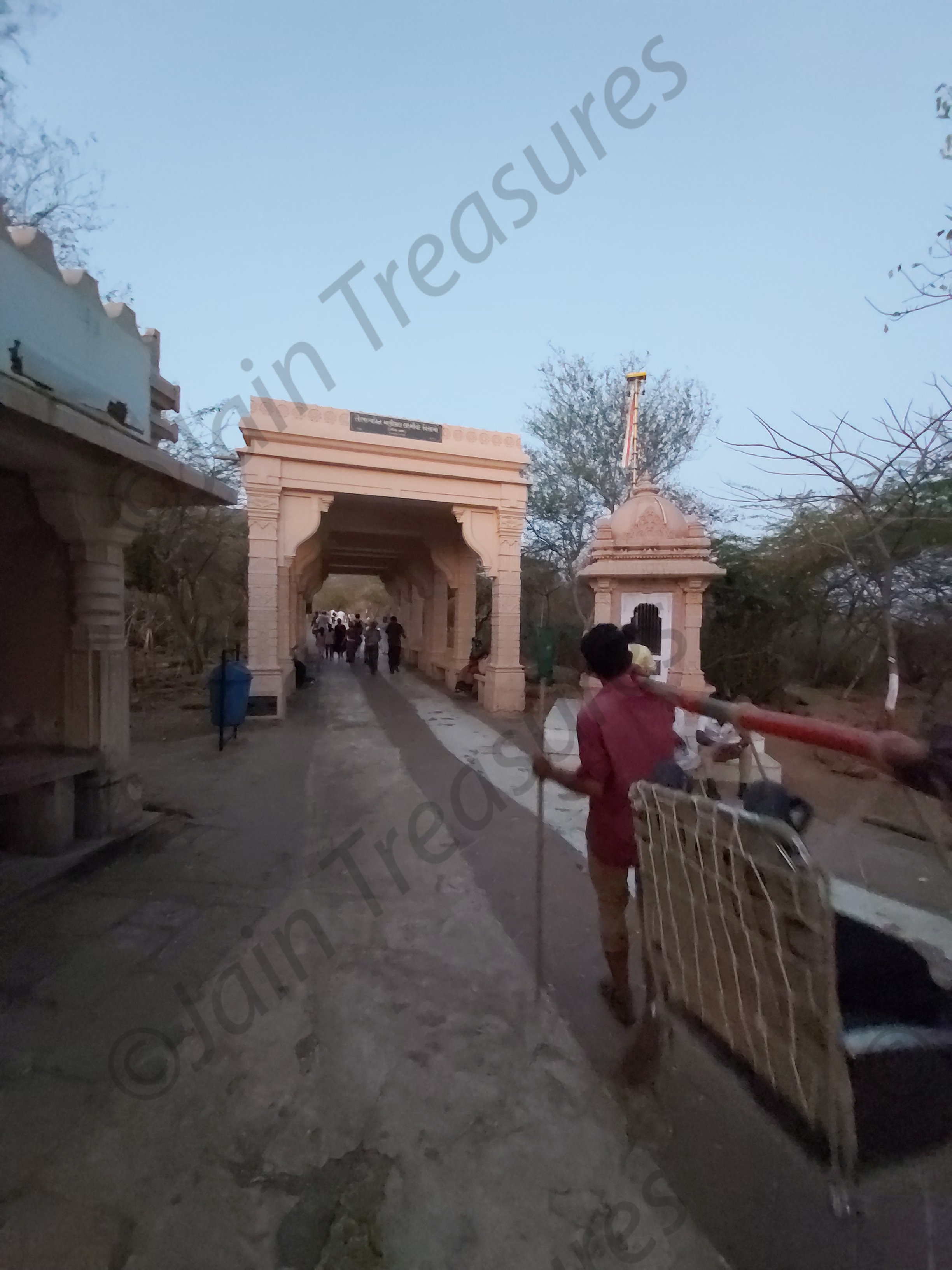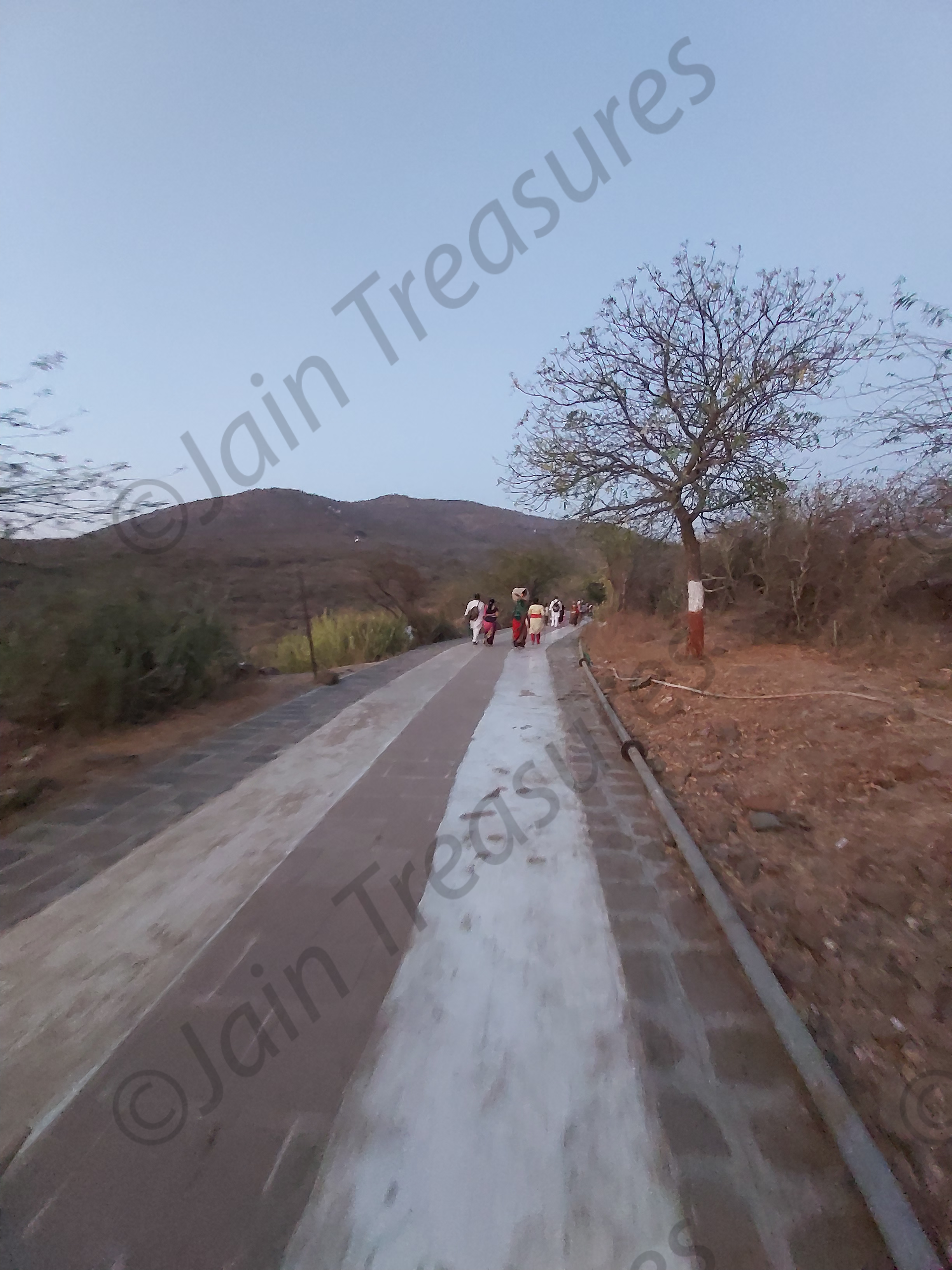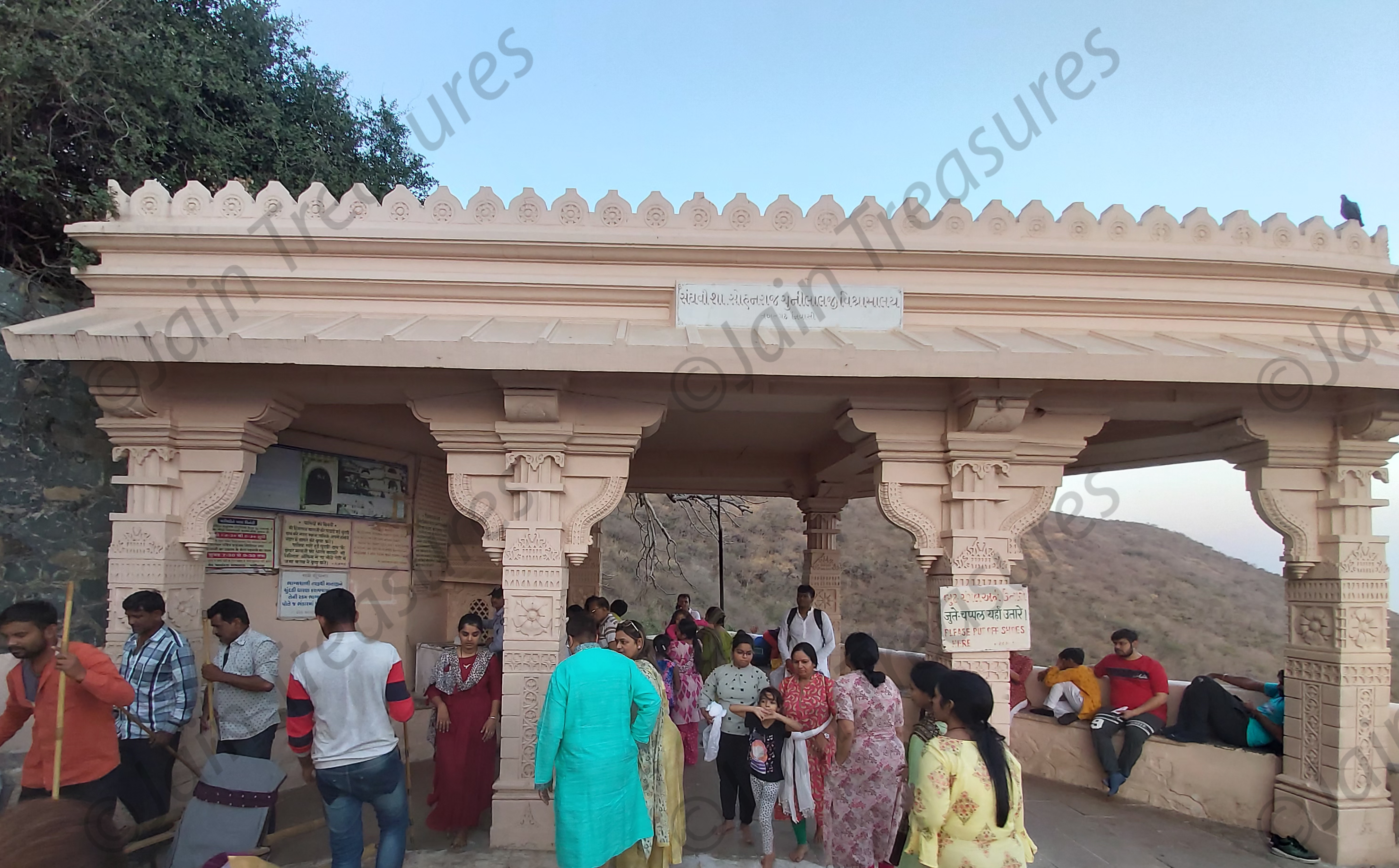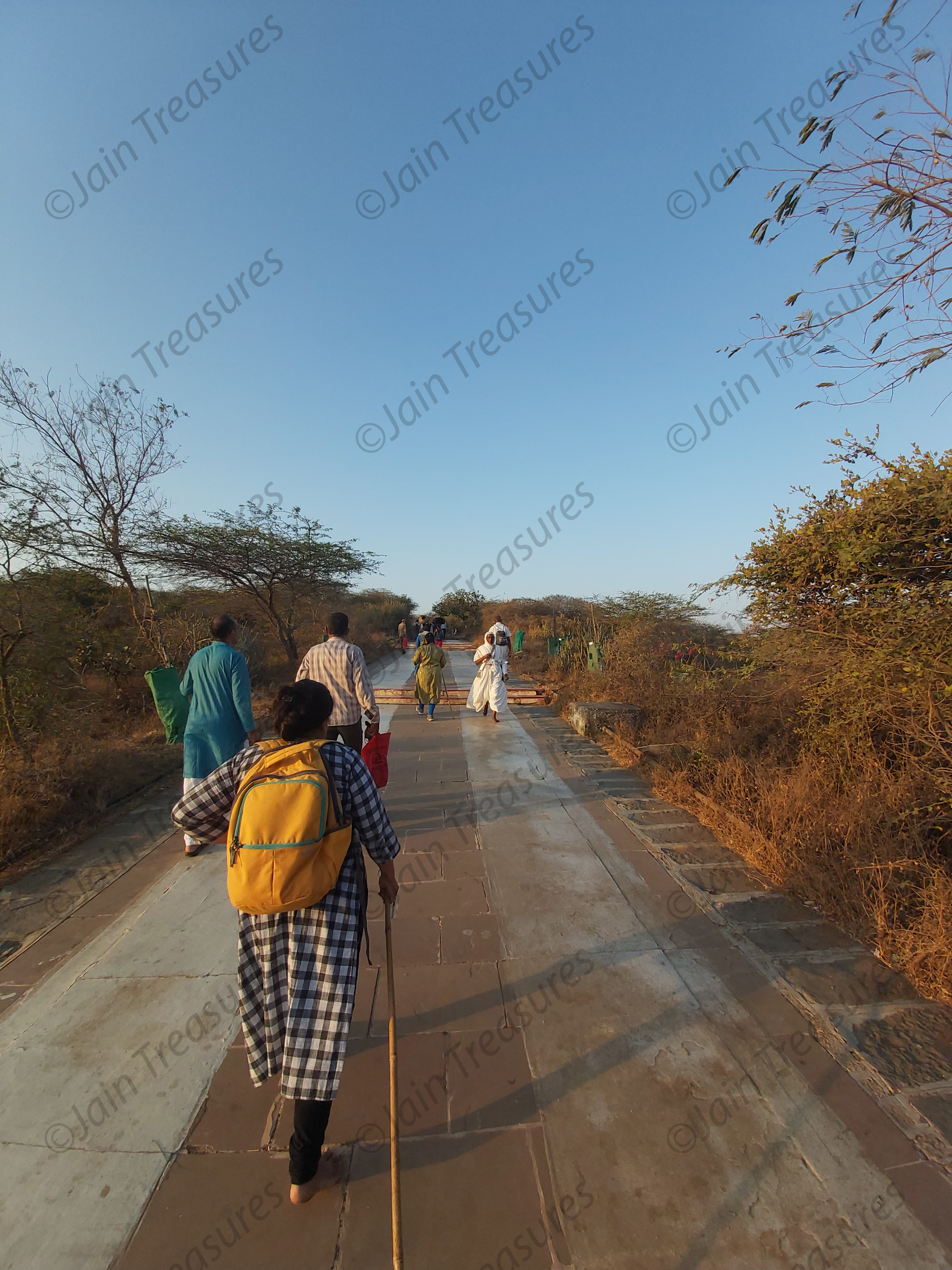Table of Contents
Main Tuk
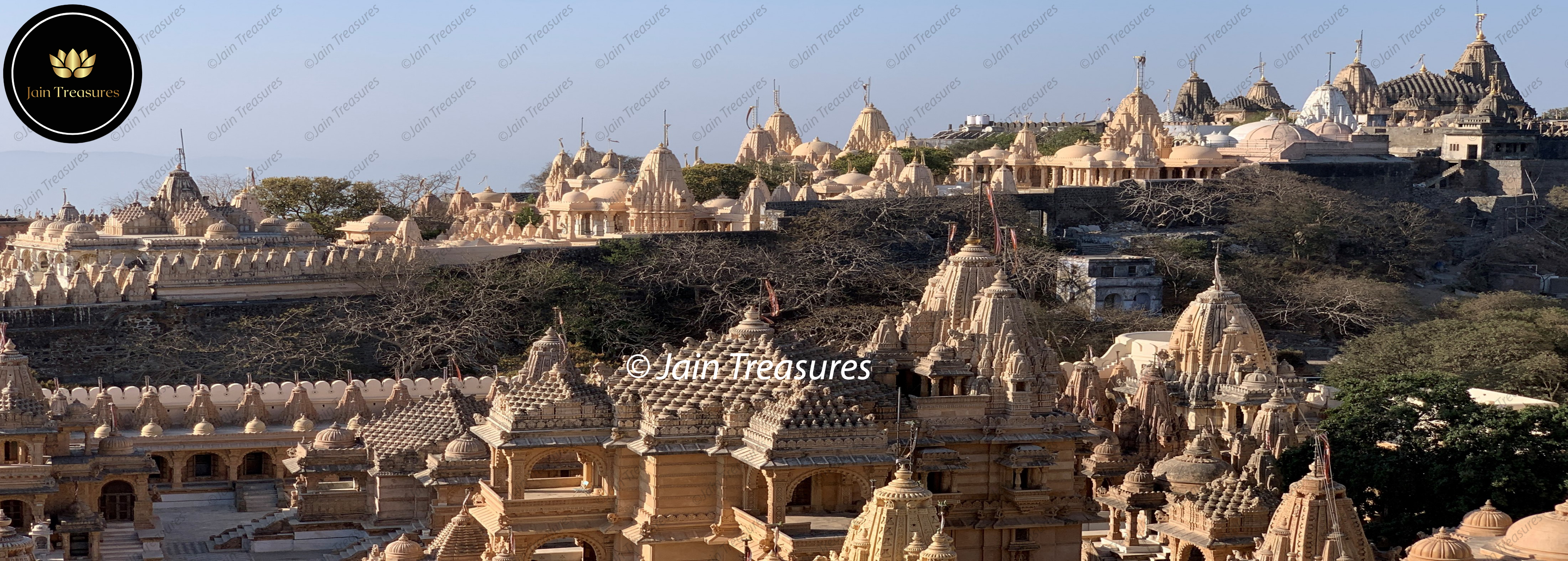
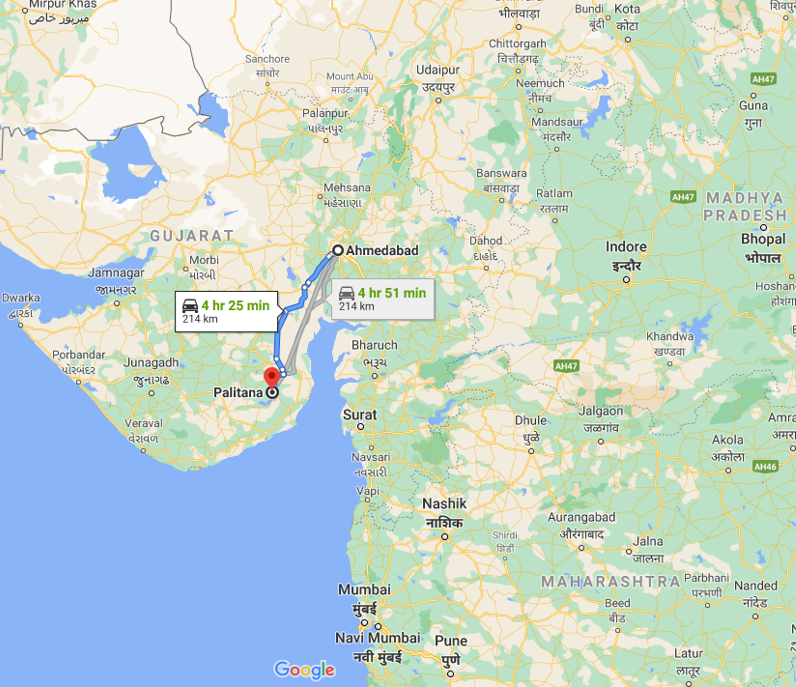
Palitana is in Western India in the State of Gujarat.
It is one of the holiest of Jain tirth (pilgrim centre) and is considered to be sasvat (eternal).
If possible, every Jain aspires to visit this holy place at least once in their lifetime. It is believed that Lord Adinath climbed this mountain 99 times.
Palitana is the name of the city and the holy mountain is called Shatrunjay (overcome enemies i.e. one’s internal passions and annihilate all the karmas).
This is a spiritually uplifting pilgrimage. The excitement builds up early morning as one prepares to embark on a pilgrimage of self discovery, contemplation and utmost bliss. From the base to the top of the mountain is approximately 3.6kms with over 3500 steps to climb. It is about 2000 feet above sea level.
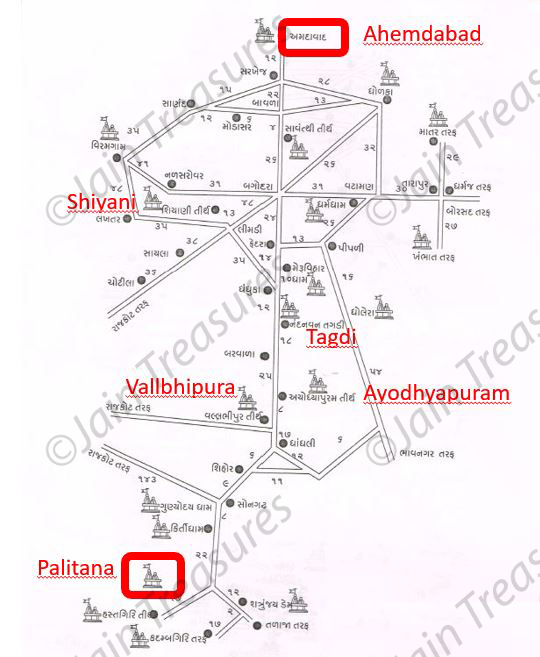
If you are travelling from Ahemdabad to Palitana, there are quite a few Jain tirths which come along the way and if you have time they are worth visiting. In particular, a visit to Vallbhipura is highly recommended as it is a historical town with great significnce for the Jains. It is here that last Jain council was convened in order to compile the Jain Agams (holy scriptures) to prevent the knowledge from being lost as it was hitherto transmitted orally. There are murtis of eminent Jain Acharyas in a shrine adjacent to the main temple.
Entering the city of Palitana…
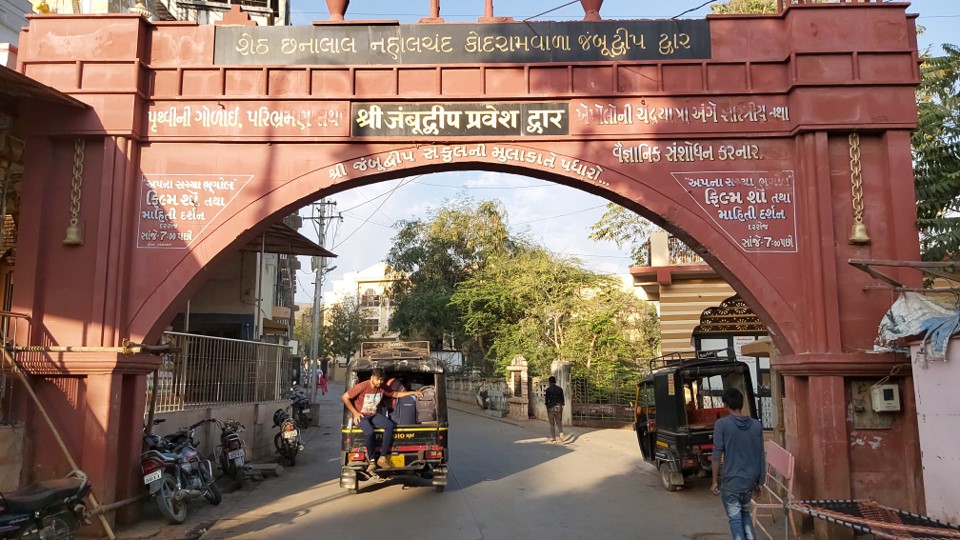
Many Jain pilgrims do Chaityavandan (homage) at the Jay Taleti (in Sanskrit tal means surface of the ground, level surface or sole of the feet). There are 11 small shrines (deri) which have foot prints of various Tirthankaras. They were renovated by Anandji Kalyanji Pedhi in 1977.
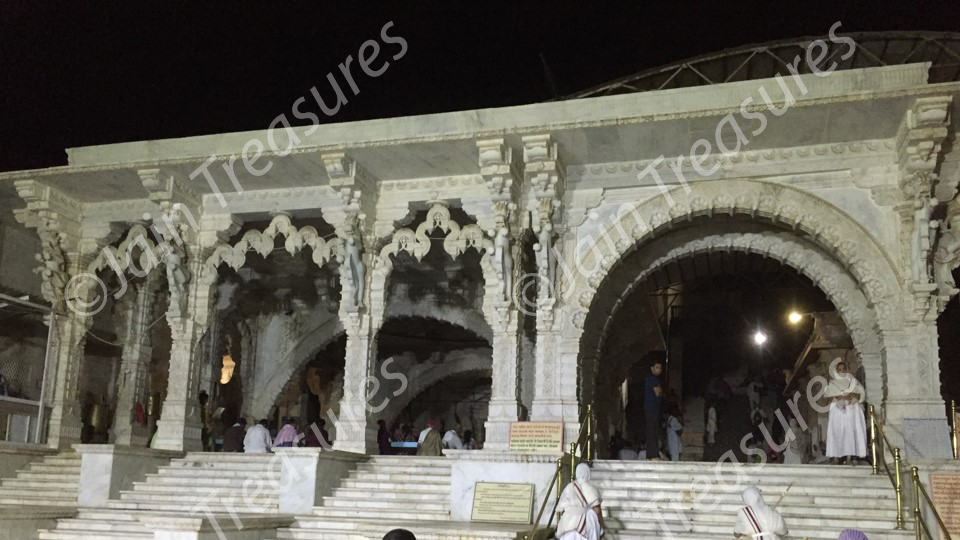
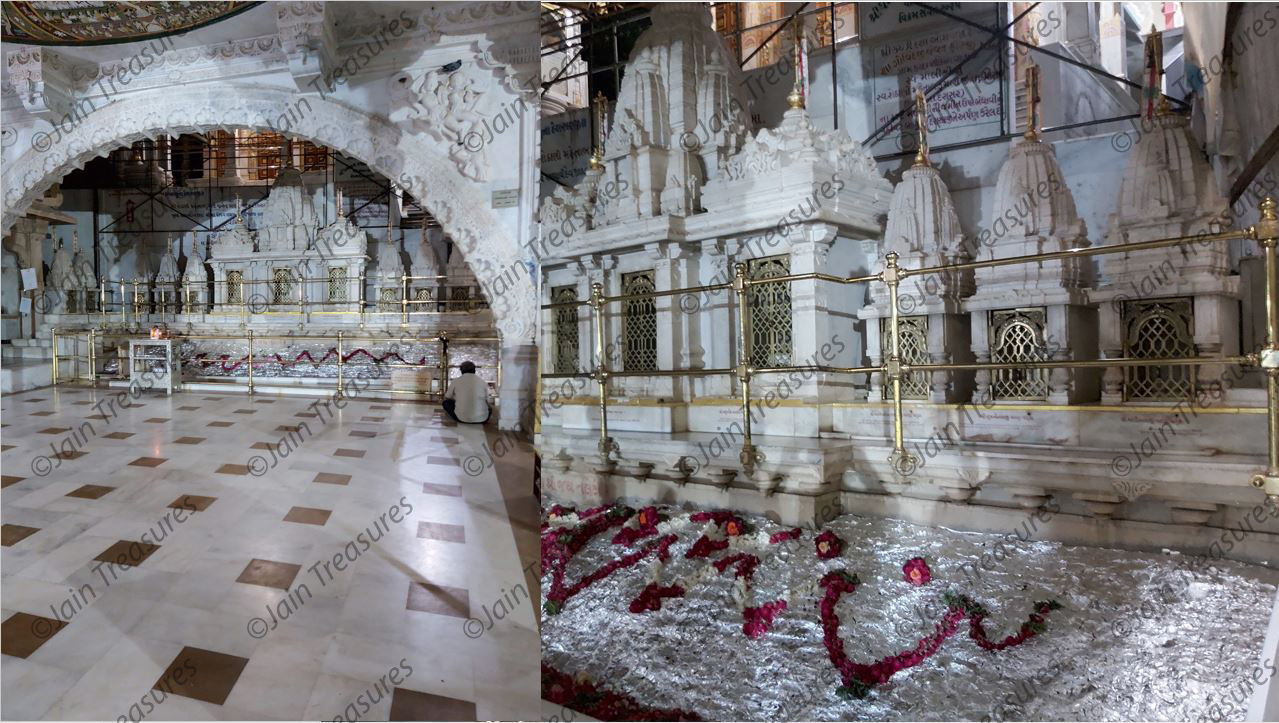
Then pilgrims bow down to the various idols in the vicinty such as that of the guardian diety of Shatrunjay Tirth, Kavad Yaksharaj.
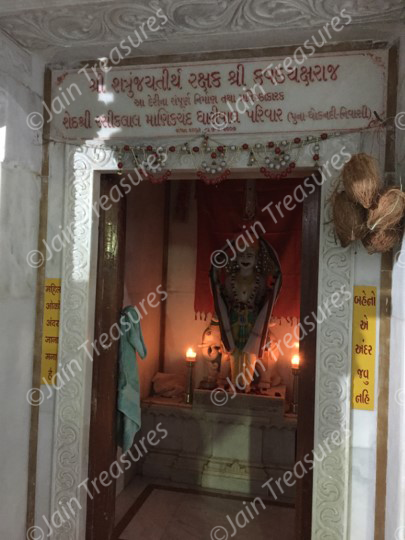
Acharya Vajra Swami once met a drunkard and with sweet words showed him the horrors of drinking liquor. The drunkard took an oath and learnt Navkar Mantra by heart. One day seeing the liquor he was ready to break that oath, but it happened that a hawk was flying in sky with its prey caught in its beak. The prey was none other than a serpent. It was oozing venom….
The jar underneath was open, so the venom dropped in it making it poisonous. As he took a sip, the poison began to shatter his brains. Remembering his own offence of violating his oath, he was very much grieved. Begging pardon, he surrendered himself to the holy hill Palitana and reciting Navkar, he passed away and became Kapardi Yaksha (Kavad Yaksharaj).
From taleti one proceeds to Babu derasar which is also known as Dhanvasi Tuk. It was built by Rai Bahadur Dhanpat Singhji Dugar who was residing at Murshidabad. The consecration ceremony occurred in 1893AD. There are 84 deris (smaller shrines) around the periphery of this temple. When his elderly mother, Mehtabakunvar, could not climb to the top of the holy mountain, he decided to build a replica of the temple at the foothills so that his mother and similarly anyone old and frail who cannot ascend to the main temple can at least do darshan at the base of Shatrunjay mountain. Murtis of Lord Adinath, Pundarik Swami and a replica of Ryan Tree are consecrated here. For more photos, click the following link.
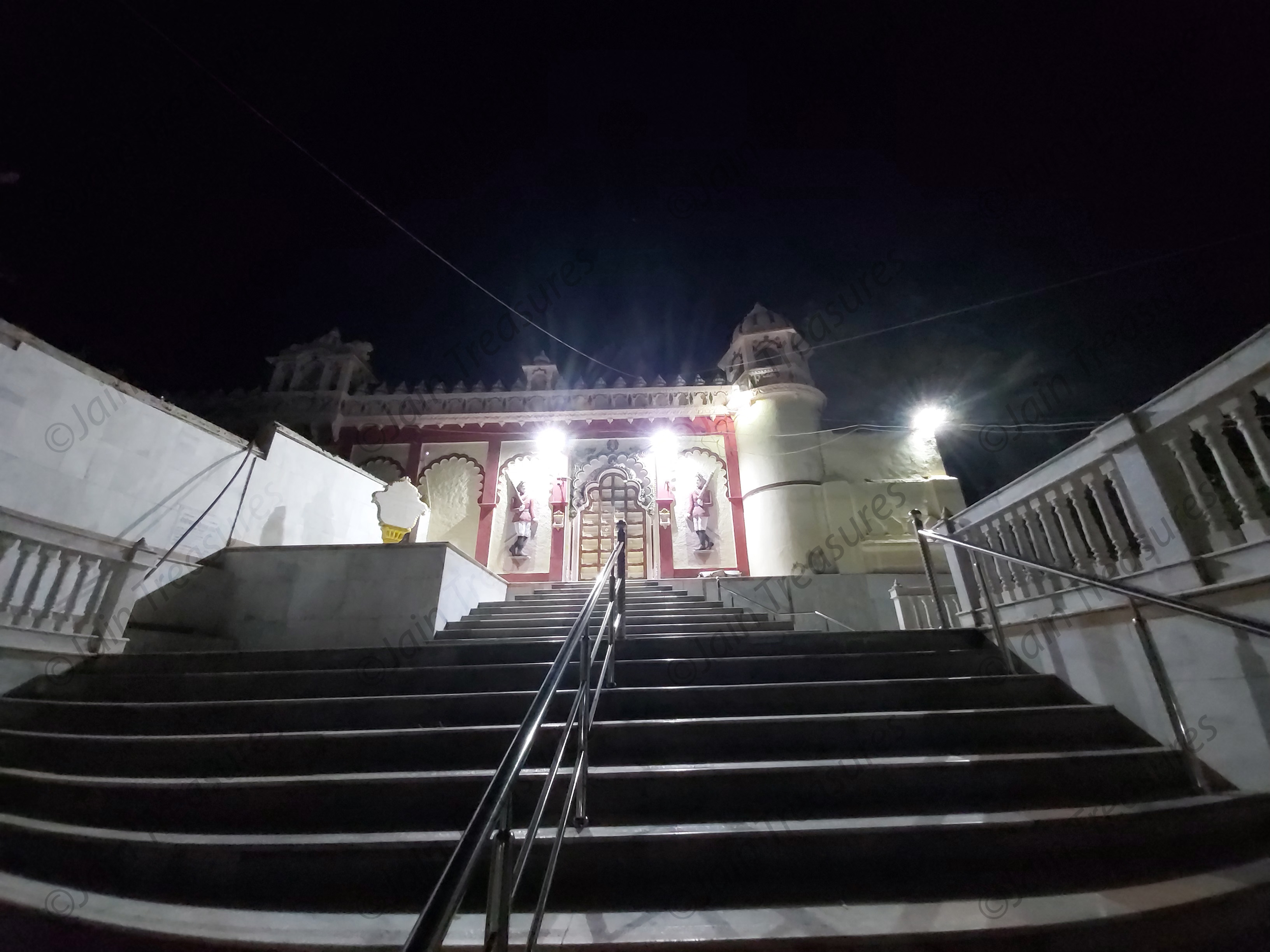
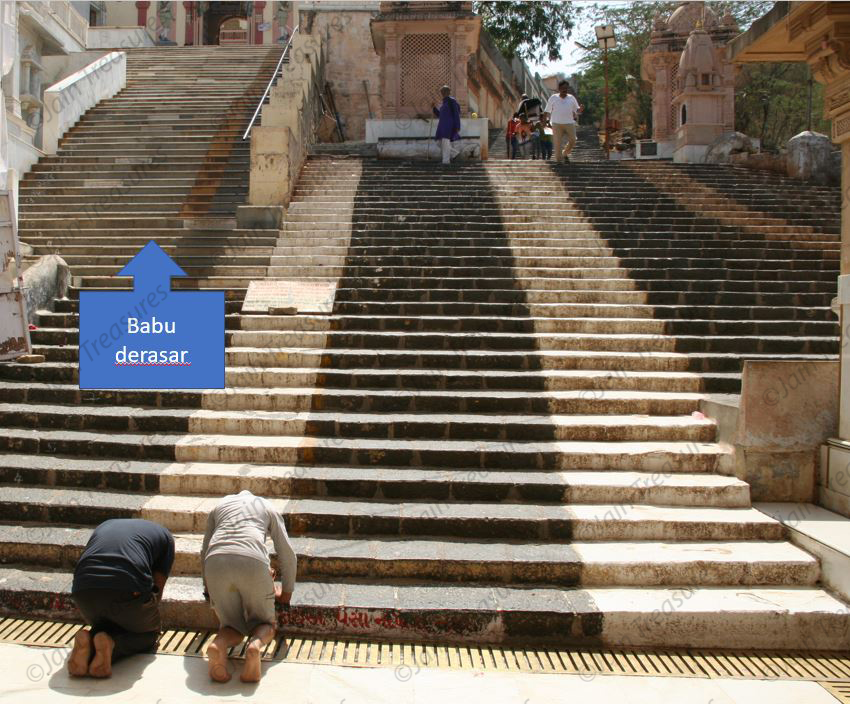
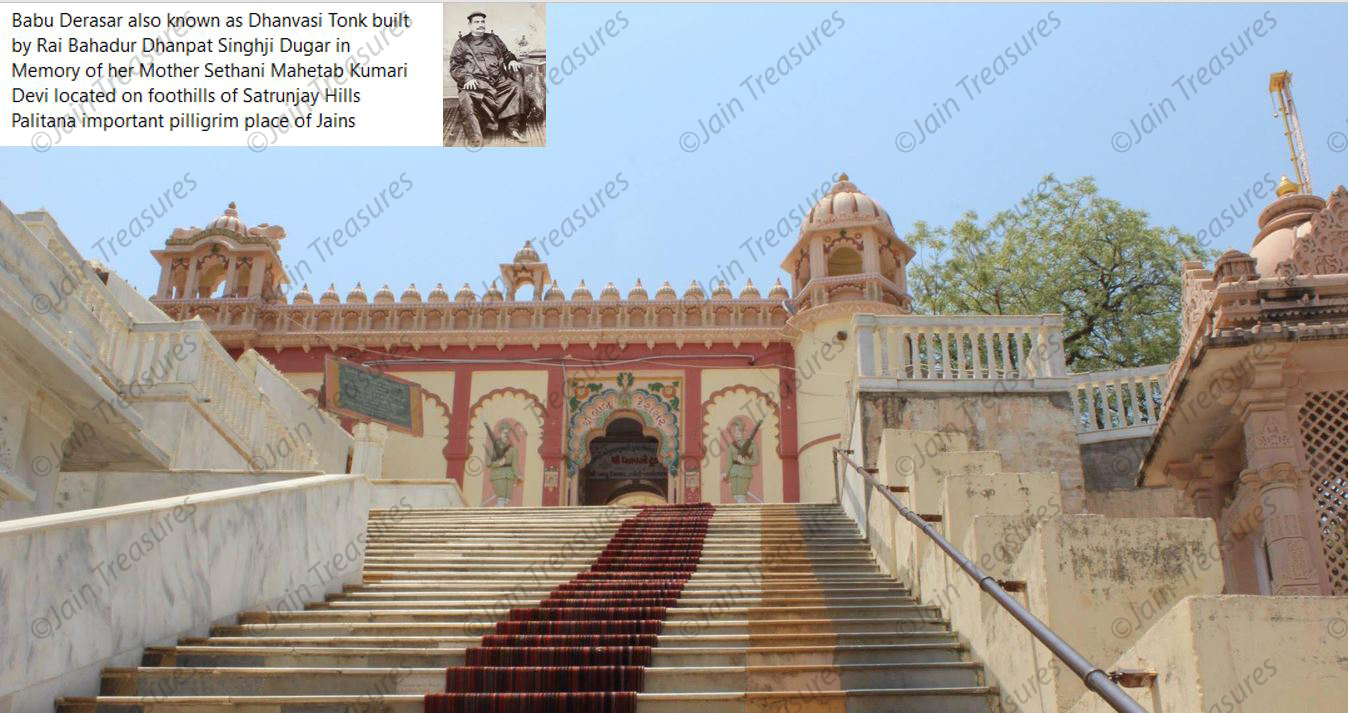
Opposite to Babu Derasar is the Samvasaran Mandir. It depicts the assembly hall created by the heavenly beings when the Tirthankar preaches.
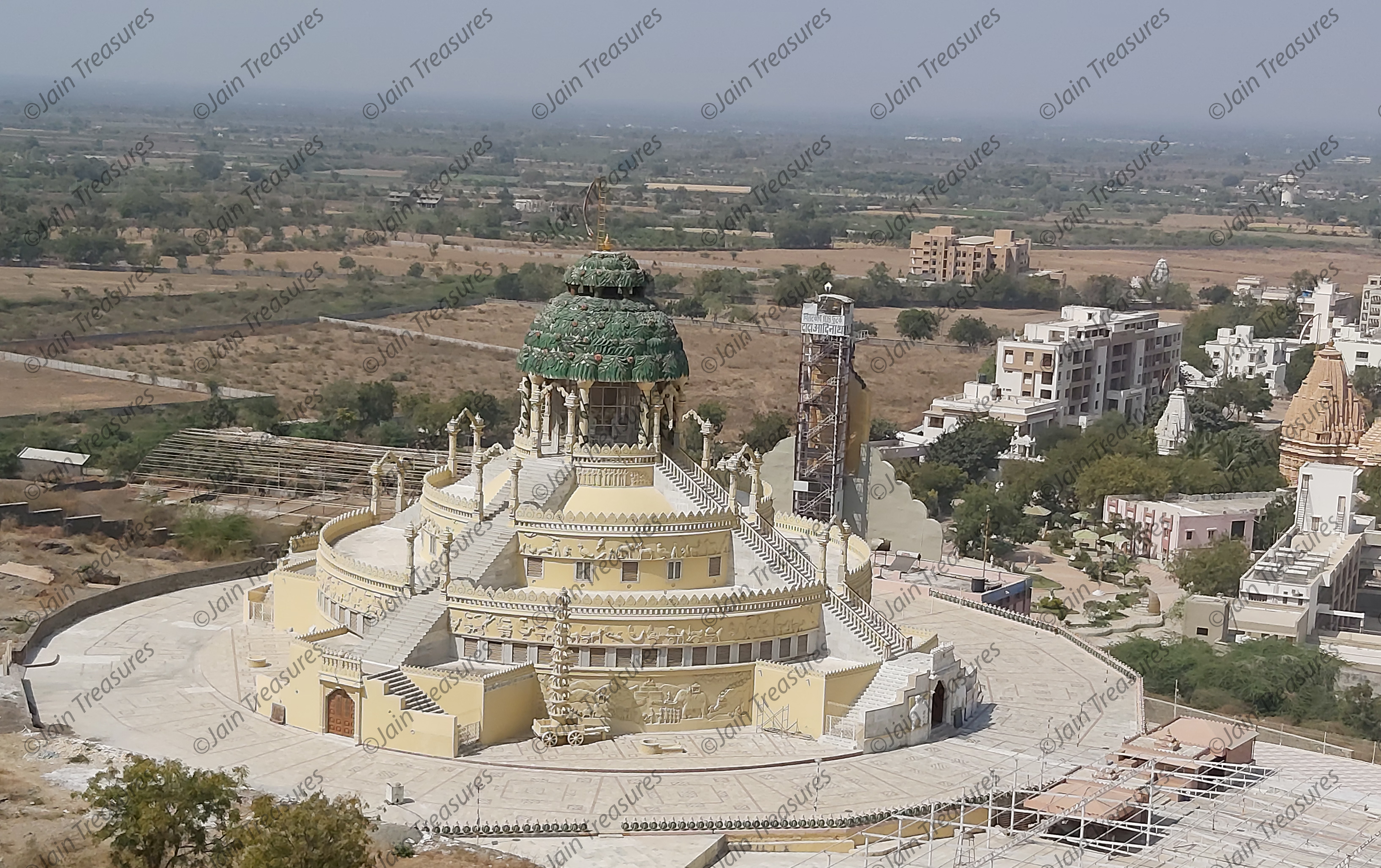
Around the circumference of the entire temple, there are inscriptions of 108 Parshvanath tirths across the globe including overseas temples. One of the first books in English on Jain philosophy I received was from Acharya Pujya Panyas Pravar Shree Chandrashekhar Vijayji Maharaja at this temple.
Let’s proceed with the Yatra and dwell upon how this pious yatra can help us in our inward journey of self purification.
Hinglaj Devi
This is the shrine of Ambika Devi. Why is it known as Hinglaj Devi. See the photo below for the explanation!
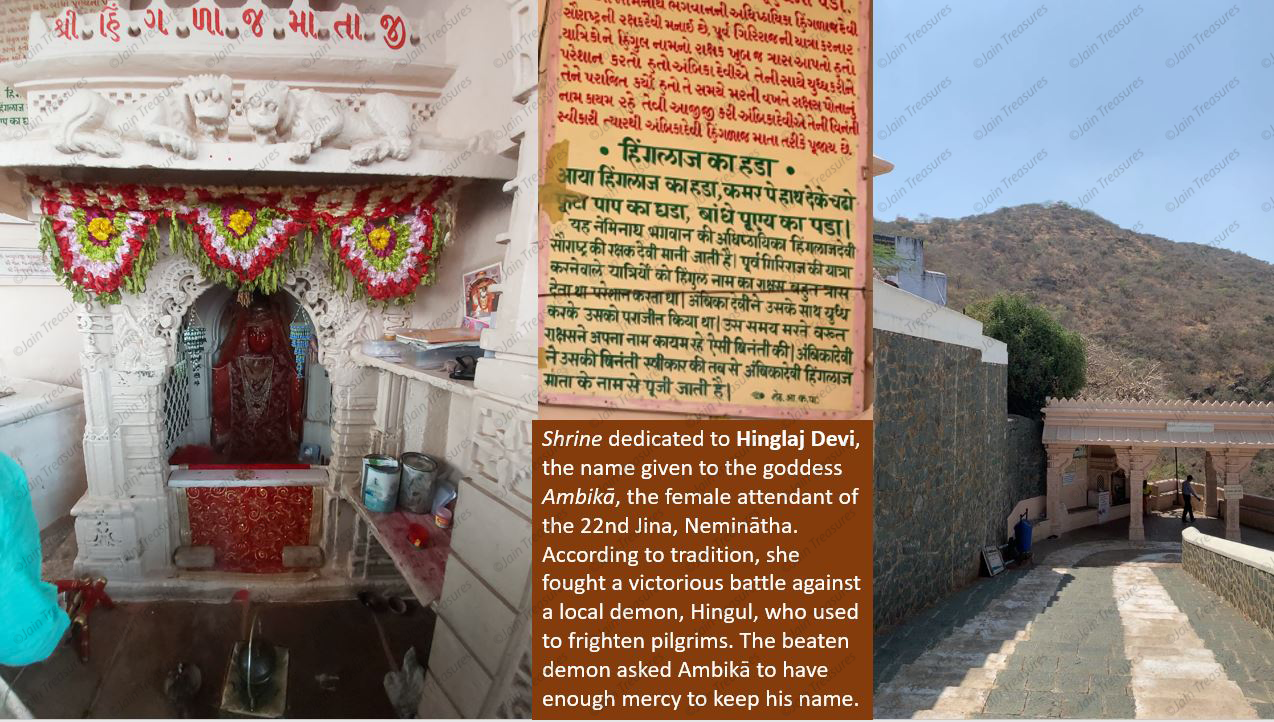
Kalikund Parshwanath
Shrine dedicated to an elephants devotion!
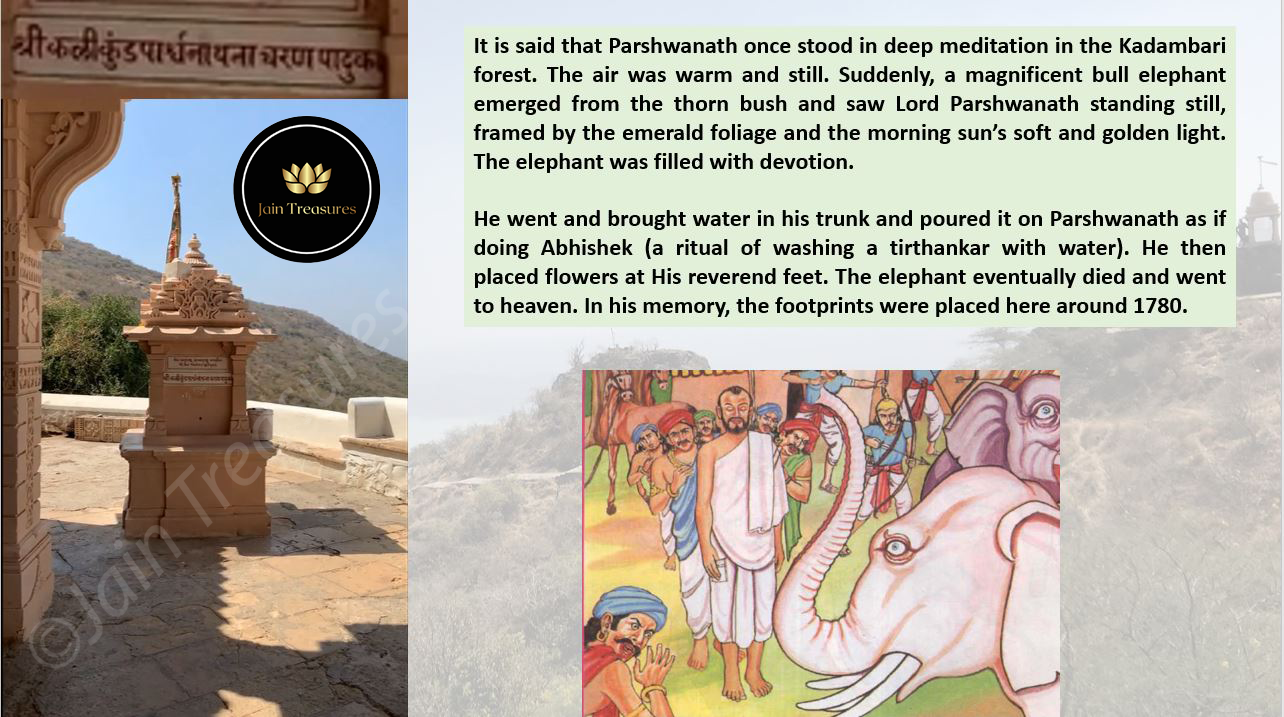
Dravid, Varikhill, Aitmutta & Naradji Shrine
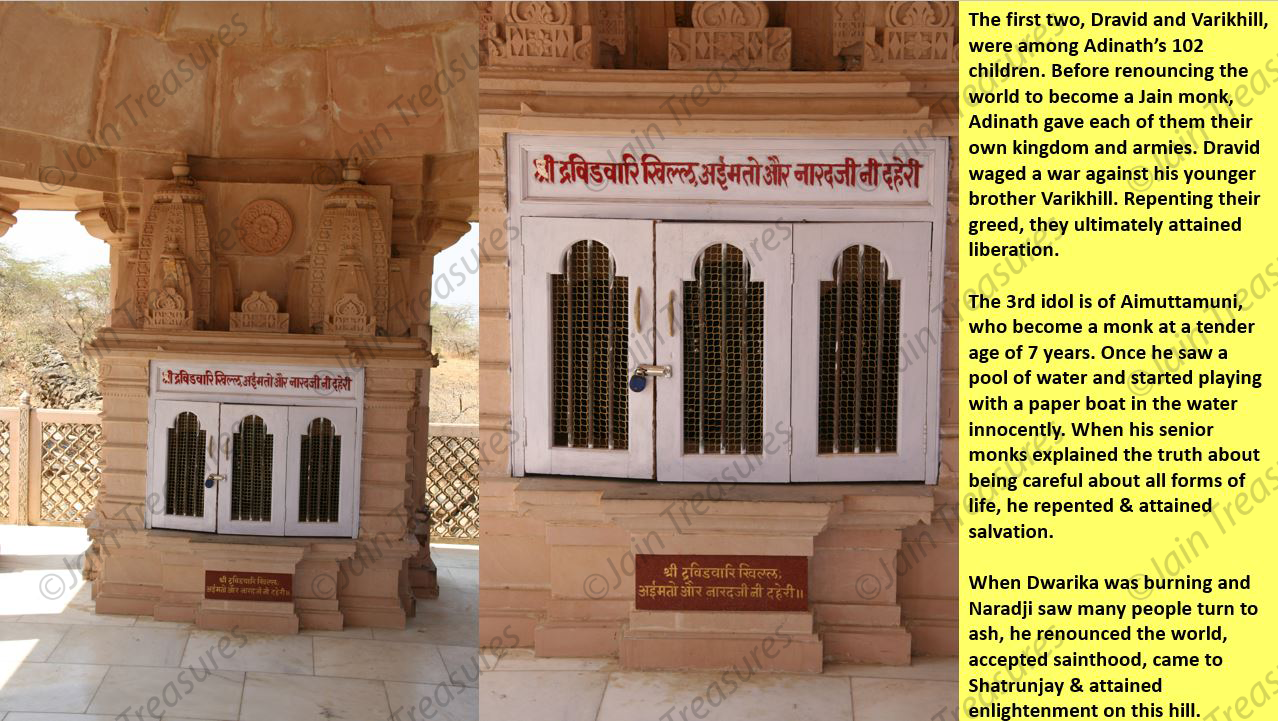
Click here to listen to the story in Gujarati of Dravid and Varikhil
Sukoshal Shrine
As one proceeds on this holy pilgrimage, it is easy to overlook the smaller shrines which are along the path and the history associated with them. This is a shrine illustrating son following father’s footsteps, but mother full of rage and despair.
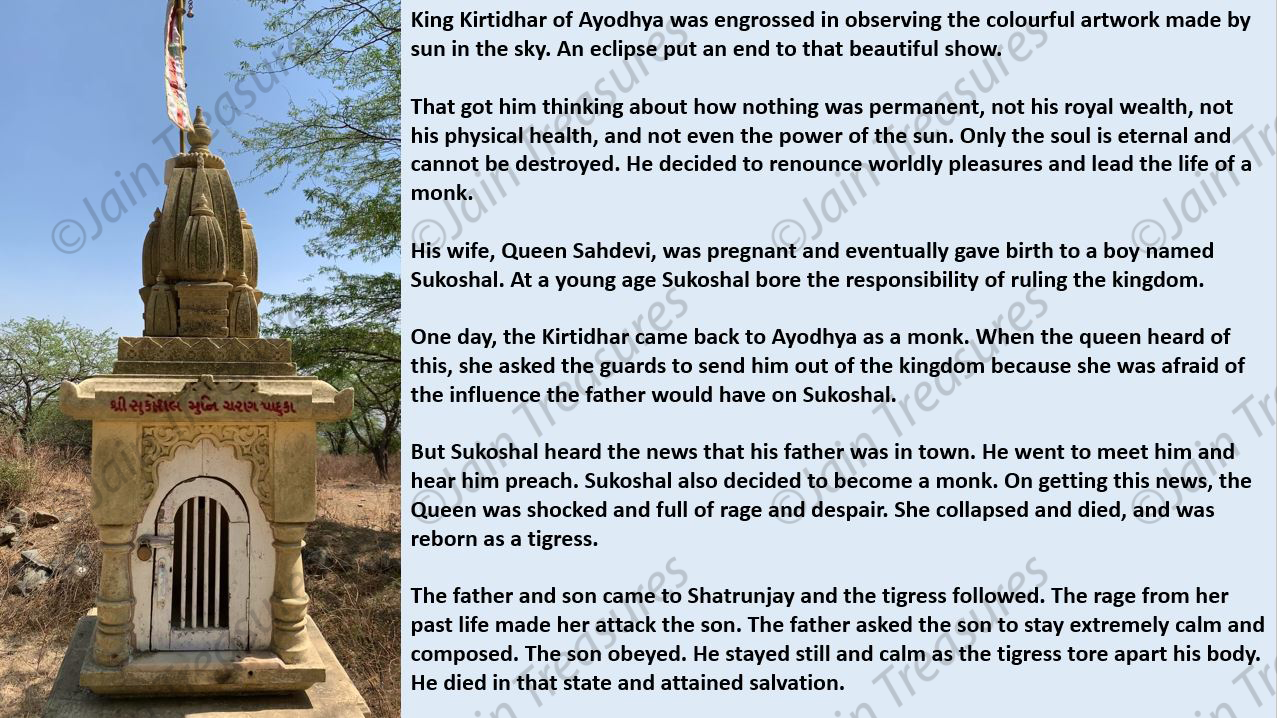
Chakeshwari Devi Shrine
Shrine dedicate to Chakeshwari Devi who is the guardian Goddess (yakshini) of Lord Adeshwar.
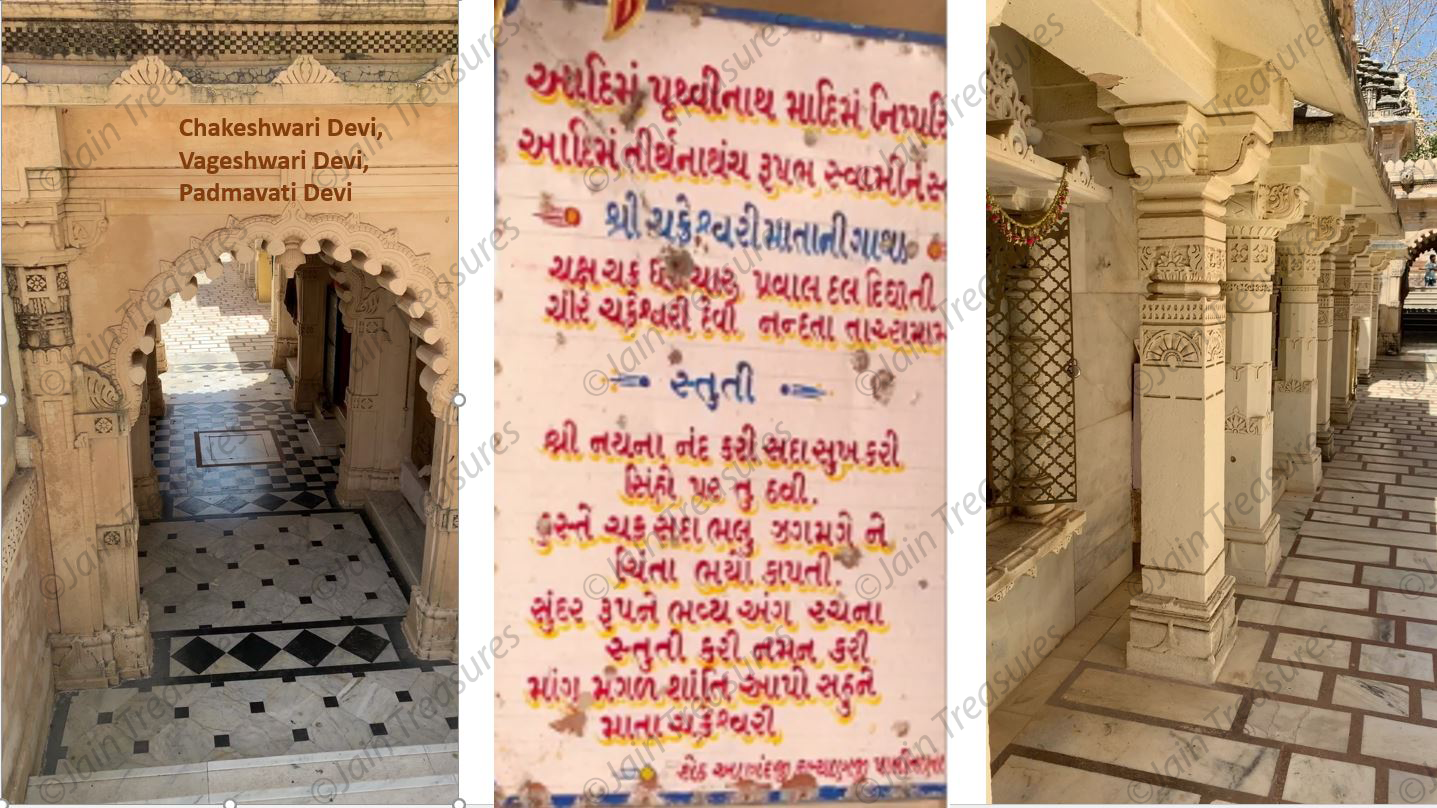
Waghan Pol
Waghan means tigress. At the bottom of the gate is carving of a tigress, which is how this gate got its name. Two brothers, Vastupal and Tejpal, built this gate approximately 800 years ago in the memory of a brave man, Veer Vikram Singh. It is said that a tigress was killing and scaring away pilgrims coming here. Once Veer Vikram Singh came home for lunch and his sister-in-law had prepared a meal which was missing some seasonings. In anger he taunted his sister-in-law and she tersely replied that don’t take out your anger and frustration on me, but if you are brave enough then go and face the tiger who is terrorising all the pilgrims climbing the holy mountain. With his sister-in-law’s challenge he marched towards the mountain joined by his friends. His friends became afraid as they neared the summit where the tiger was residing and did not proceed further. However, Veer Vikram Singh went all by himeself and informed his friends that if he is victorious he will strike the ghant (bell). He shouted at the tiger to come of its den. He fought courageously and killed the tigress. Although he was seriously maimed, he managed to strike the ghant and gave up his own life to protect the pilgrims.
You can observe statue of tiger on the bottom right of the gate with Veer Vikram Singh’s statue coloured orange standing next to it.
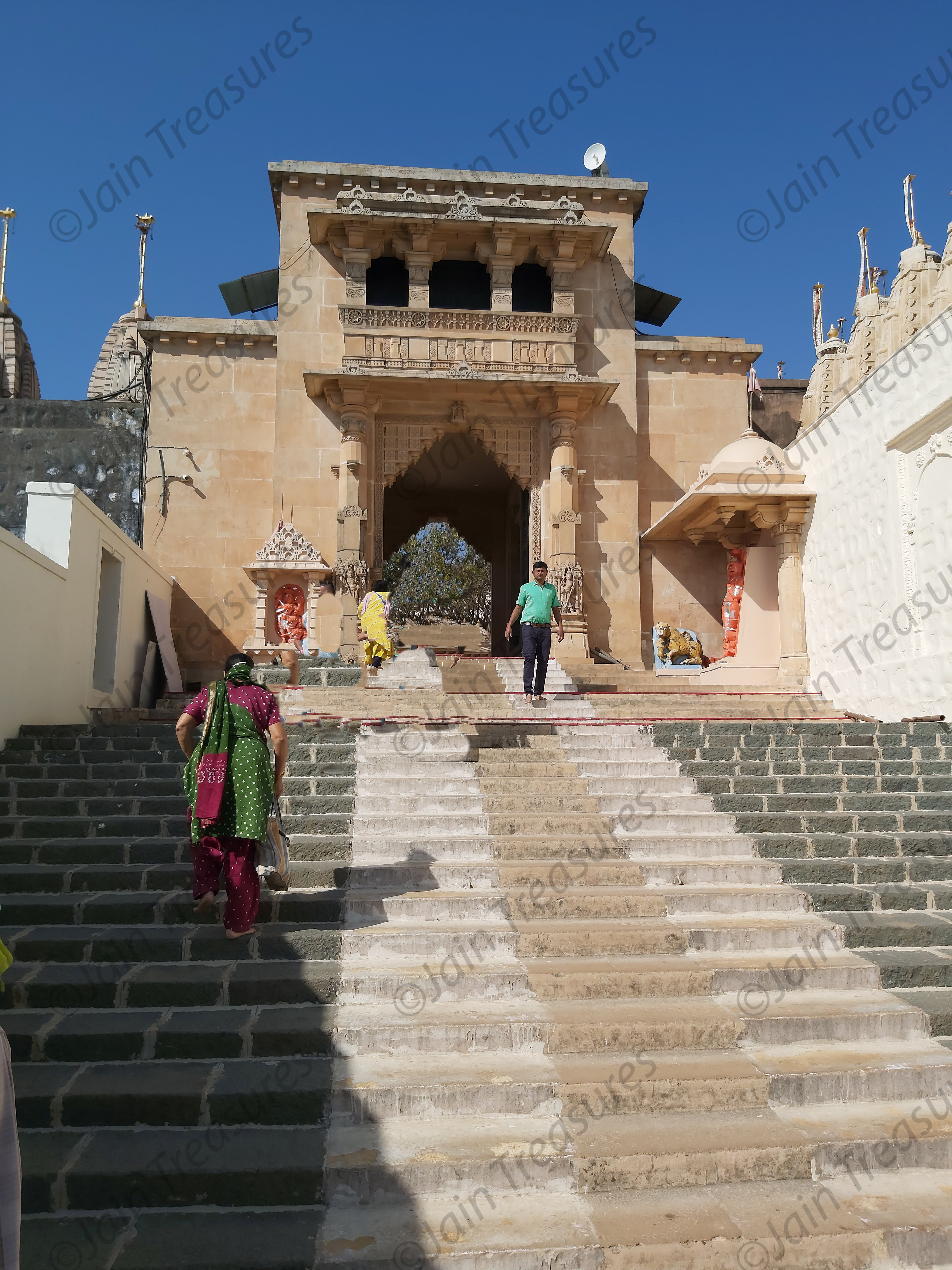


Ratan Pol means ‘Jewel Gate’. It got this name because you can see the crown jewel of all the temples on this hill as you walk through the gate.
Shri Adinath temple is at the highest point of the summit, two thousand feet above sea level. It is an ornate building dating from 1530 AD. The temple is situated on the site of a much earlier temple dating from the time of Lord Adishwar, countless centuries ago.
These temples, big, small, built in different centuries, richly carved into a breathtaking splendor, give us an impression of a Temple City.
In the middle, the temple of Adinath glows with its superb beauty. Here you find white, red, yellow and pink marble carved with fine art. Each and every stone is ready to tell you its own history. So, let’s climb this flight of stairs to enter the main temple courtyard.
Alas! we finally reach the king of all the temples in Palitana – The main Dada Adeshwar temple.
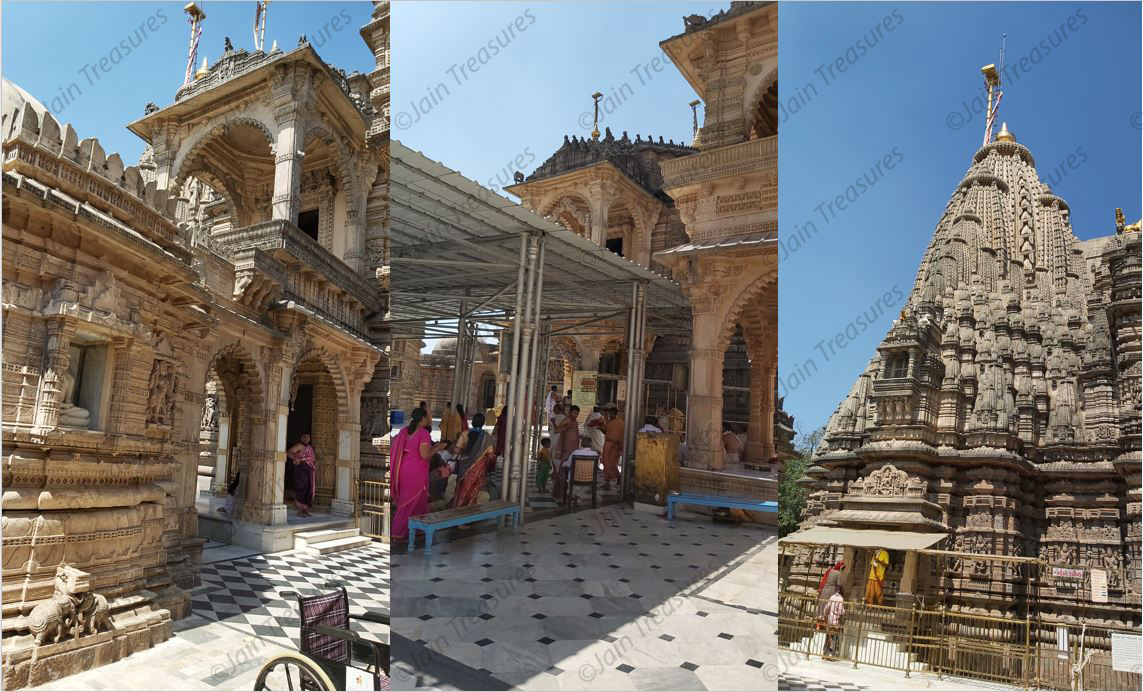
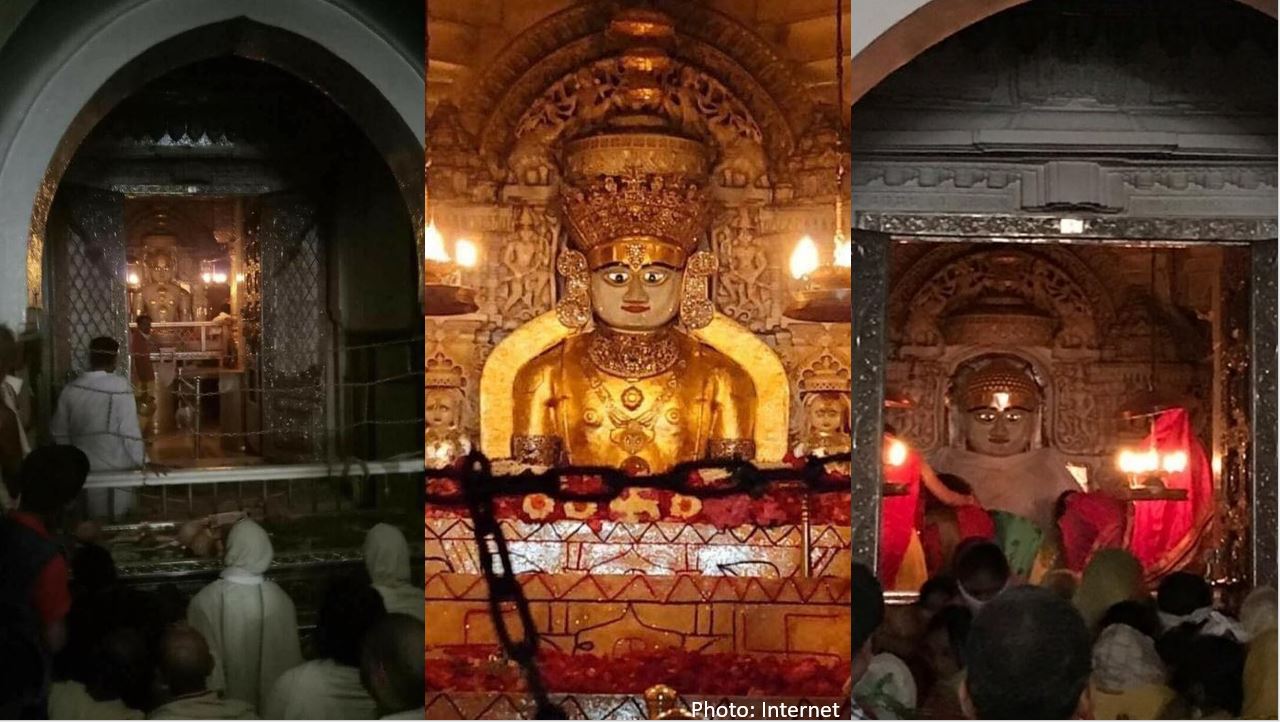
In 1314AD the 15th renovation was carried out by Samra Shah. With the blessings of Acharya Ratnakarsuriswarji Maharaj, the main idol of Lord Adinath was consecrated. During the Moslem invasions the idol was damaged. Amongst the entire Jain community, Sheth Tola Shah was the most concerned. He had five sons named Ratan Shah, Poma Shah, Dashrath Shah, Bhoja Shah & Karmaa Shah. In 1525AD Acharya Shree Dharmaratan Suriswarji Maharaj came to their town and with his astrological knowledge predicted that Tola Shah would not be able to fulfil his desire of renovating the Palitana temples, but his son Karmaa Shah would. Under the guidance of Muni Vivekmandan and Munirajshree a grand temple was built. To ensure that no obstacles arise in the construction of the temple, Munishree Ratnasagarji & Munishree Jaymandanji fasted for 6 months whilst others recited mantras. In 1530AD, in the presence of hundreds of Acharyas and ascetics, the pratistha (installation) of the Adeshwar murti (idol) took place. It is mentioned in Shatrunjay Tirthodvar that during this divine occasion, the idol appeared to take 7 breaths and for the Jains it is considered as a living God. Karmaa Shah also ensured that the tax levied on the pilgrims was abolished so that everyone, irrespective of their status, could do darshan of this miraculous idol.
Within the periphery of this temple, there are 1972 deris (smaller shrines).
Ashtapad
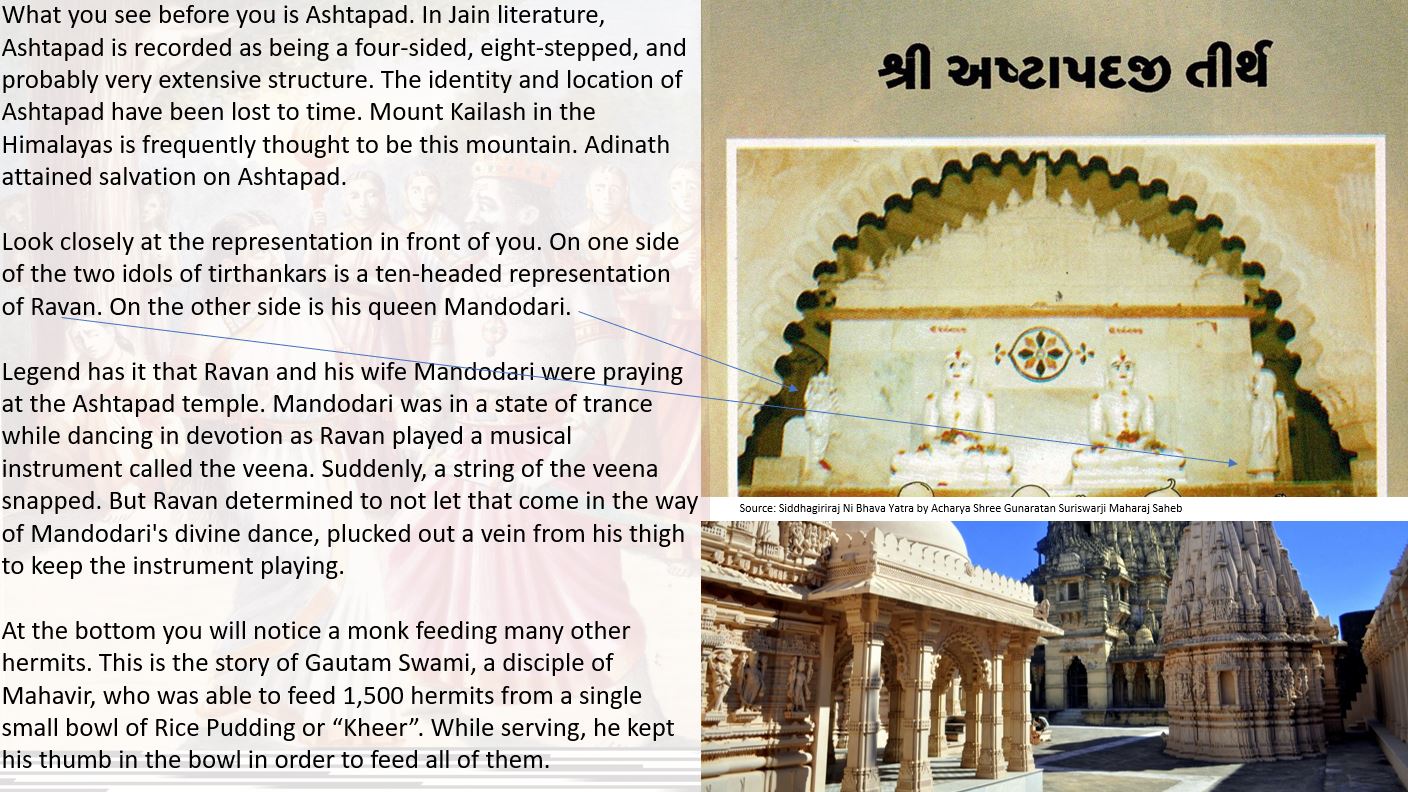
Ryan Pagla
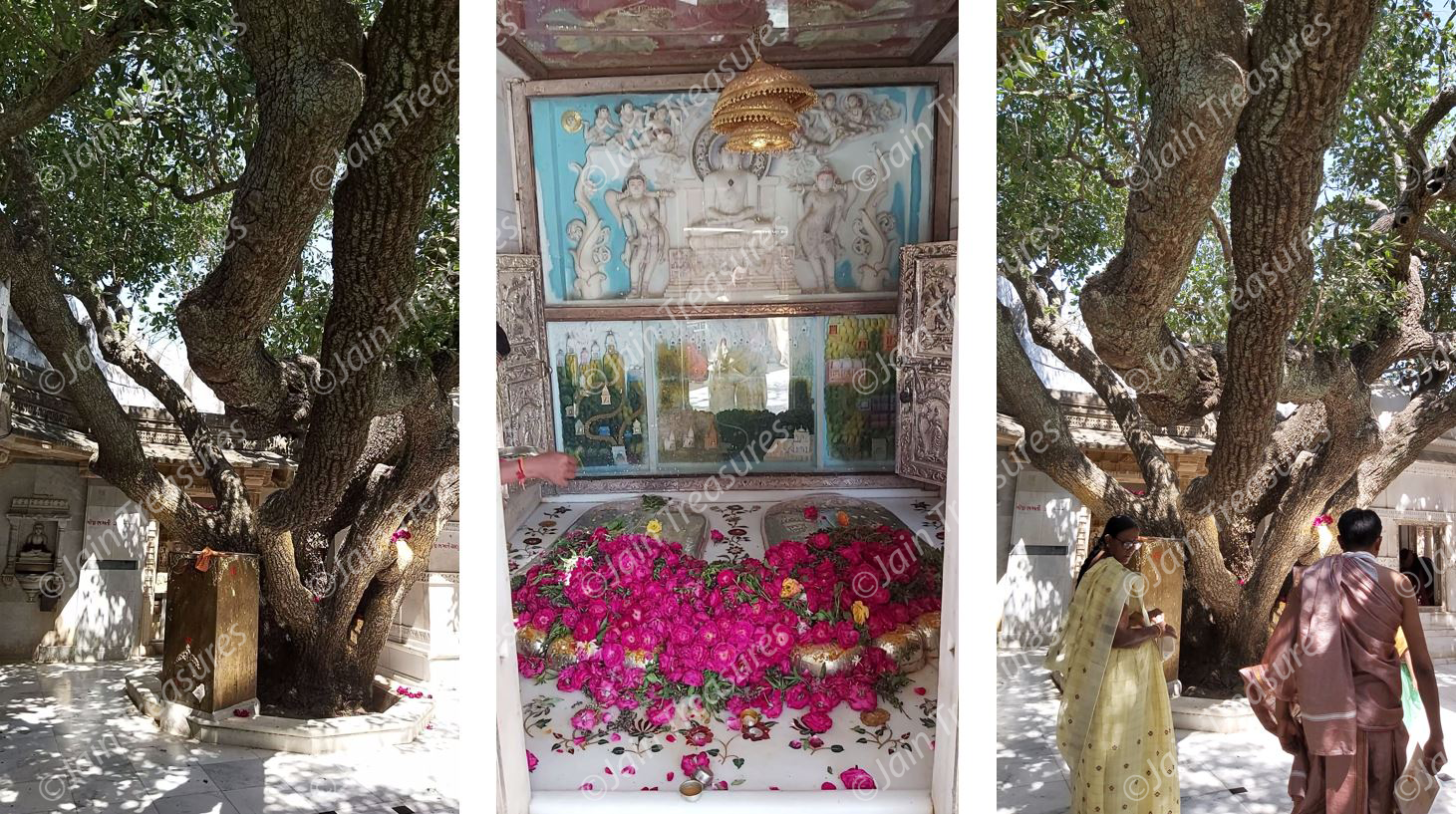
It is believed that Lord Adinath meditated and preached under this tree, and that demigods reside in each and every leaf and branch of this tree.
Devotees go around this tree 3 times (perhaps signifying that they wish to achieve liberation from the three worlds i.e. lower hellish world, middle world where we are located and upper world of heavenly beings). Under the Ryan tree, we see a set of large footsteps covered in silver foil, sprinkled with flowers. It is said that this is the exact spot from where Adinath gave his first sermon, and is very sacred to Jains.
Paap Punya Ni Bari
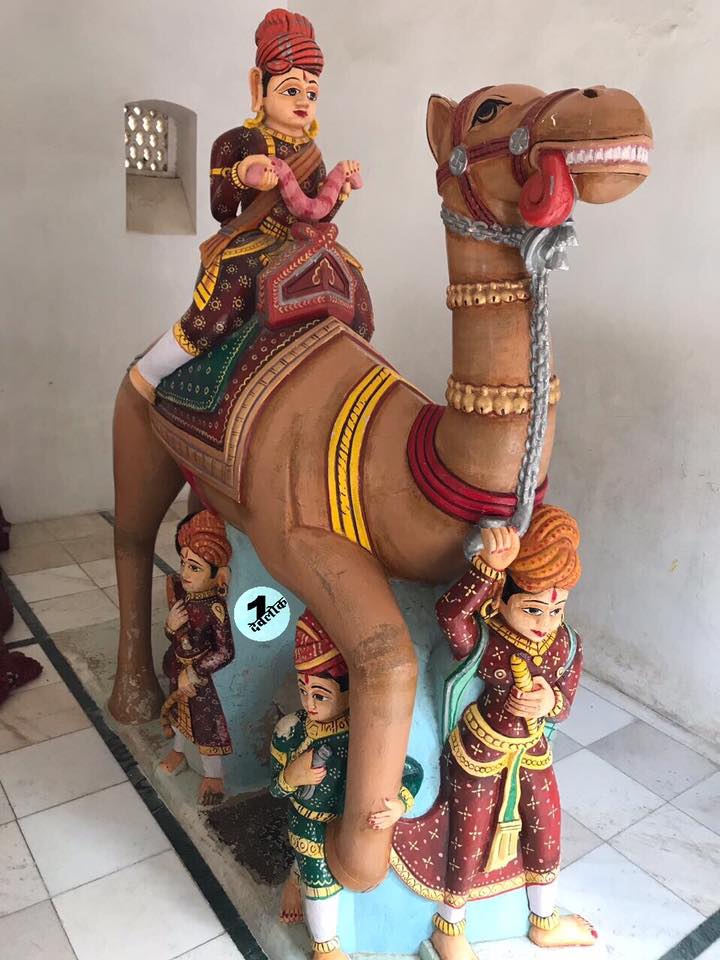
There is a statue of a man mounted on a camel with the caretaker standing beside the camel.
The challenge for all visitors is to get down on the floor and crawl through the small space between the camel’s legs. It is said that only virtuous people will succeed. Try it out – it doesn’t matter if you’re young or old, skinny or plump – you’ll succeed!
Why is it a camel and not an elephant or a horse? The tale is as follows:
800 years ago, Sheth Pratapdas, a wealthy man vowed to come to worship Adinath here on this peak on a particular day each year. He fasted for the three days it took him to travel here and broke his fast after he finished the pilgrimage. He did this diligently every year.
One year, it was exceptionally hot. The master, camel, and caretaker were all exhausted and dehydrated, but since the master would not break his vow and drink water, the caretaker and camel did not either. They reached the base of the hill, only to drop dead from exhaustion.
In memory of such great devotion and knowing that the man’s last wish was come to Adinath, this statue was made and placed here.
Another story states that the statue is that of Udayan Mantri. Click on this link to read the tale.
Nem Rajul Ni Chauri
In this temple you will find intricate carvings depicting the life of Lord Neminath and Rajul.
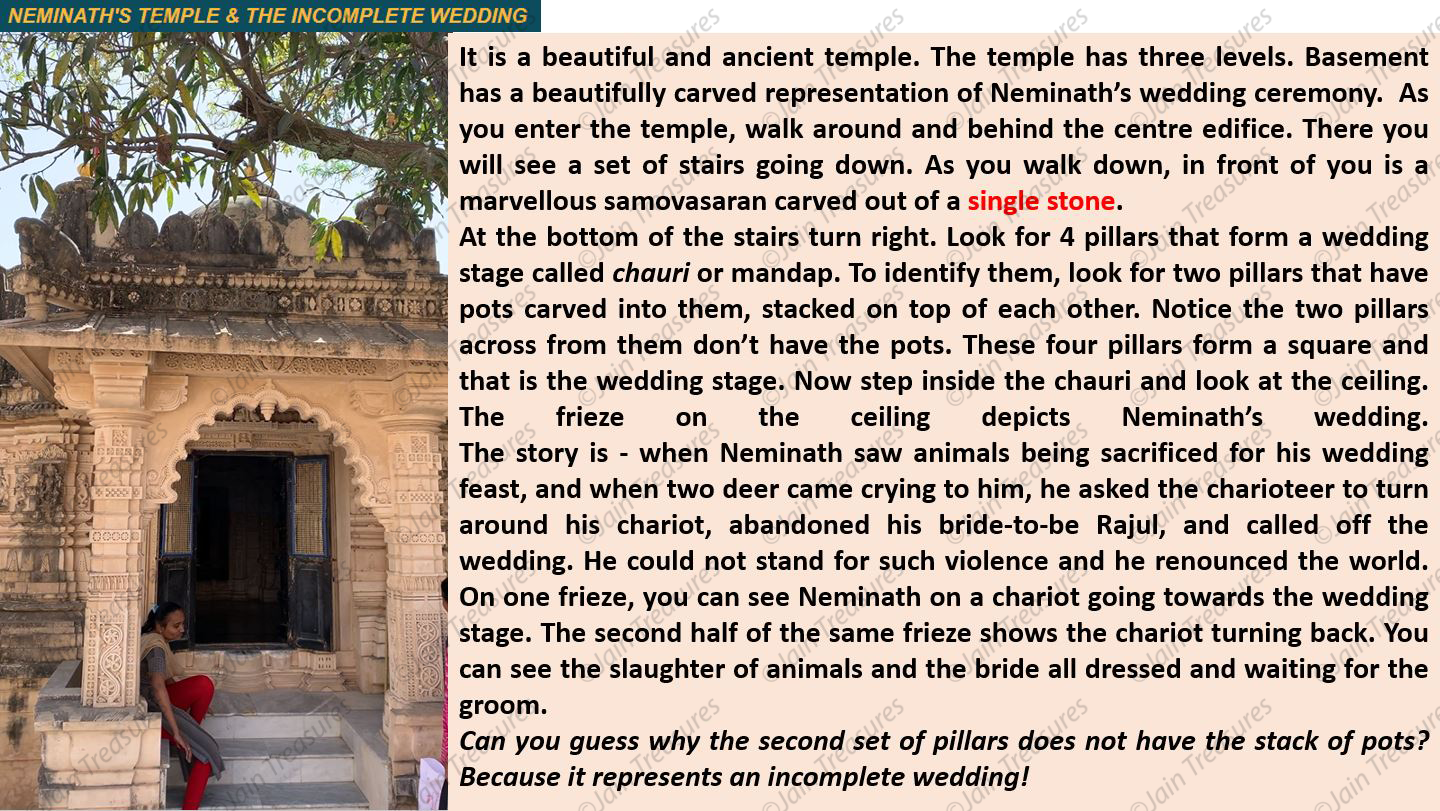
Listen to the tale of Nem & Rajul melodiously narrated by Shantilal Shah
Kirti Stumbh
A relatively recent construction is the Kirti Stumbh temple at the foothills of Shatrunjay Mountain. It’s a tall structure which has exquisite idols made of precious stones. Each idol is made of a different stone – a delicate rose quartz, a clear crystal, Jade and a special Jade called MayurPankhMargaj. It is called MayurPankh because the sunlight bouncing off the idol creates images of a peacock feather. These beautiful idols make this a “must-see” stop during the pilgrimage.
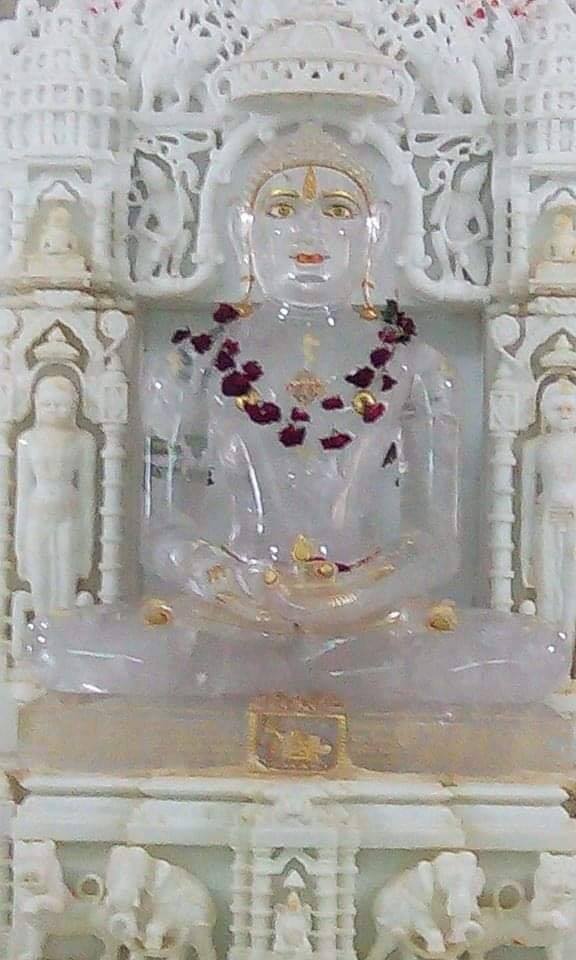
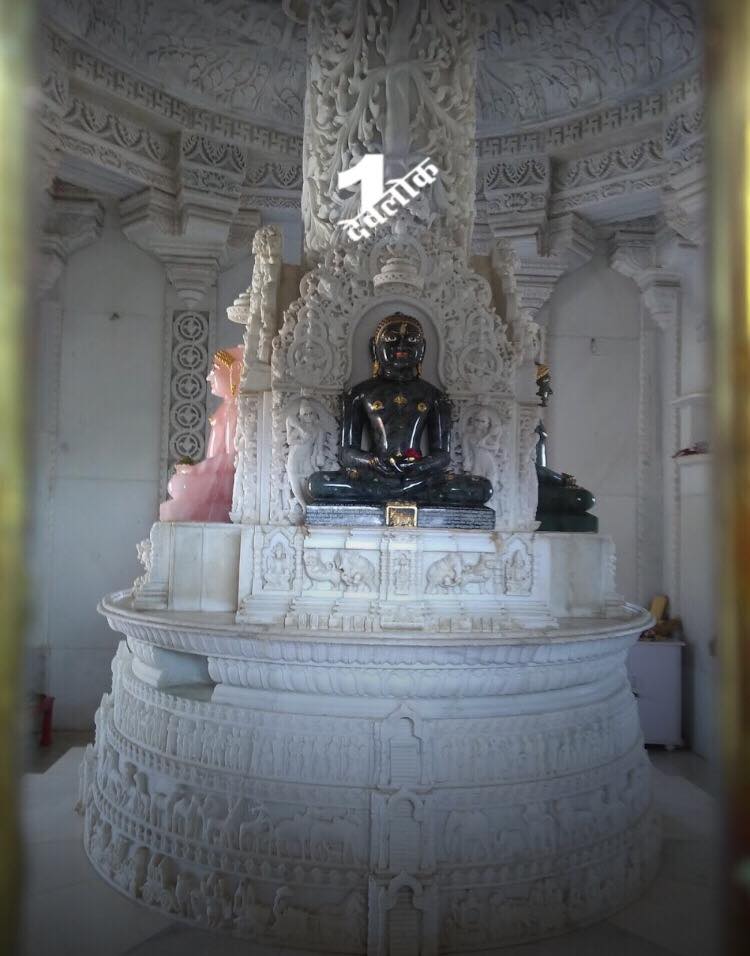
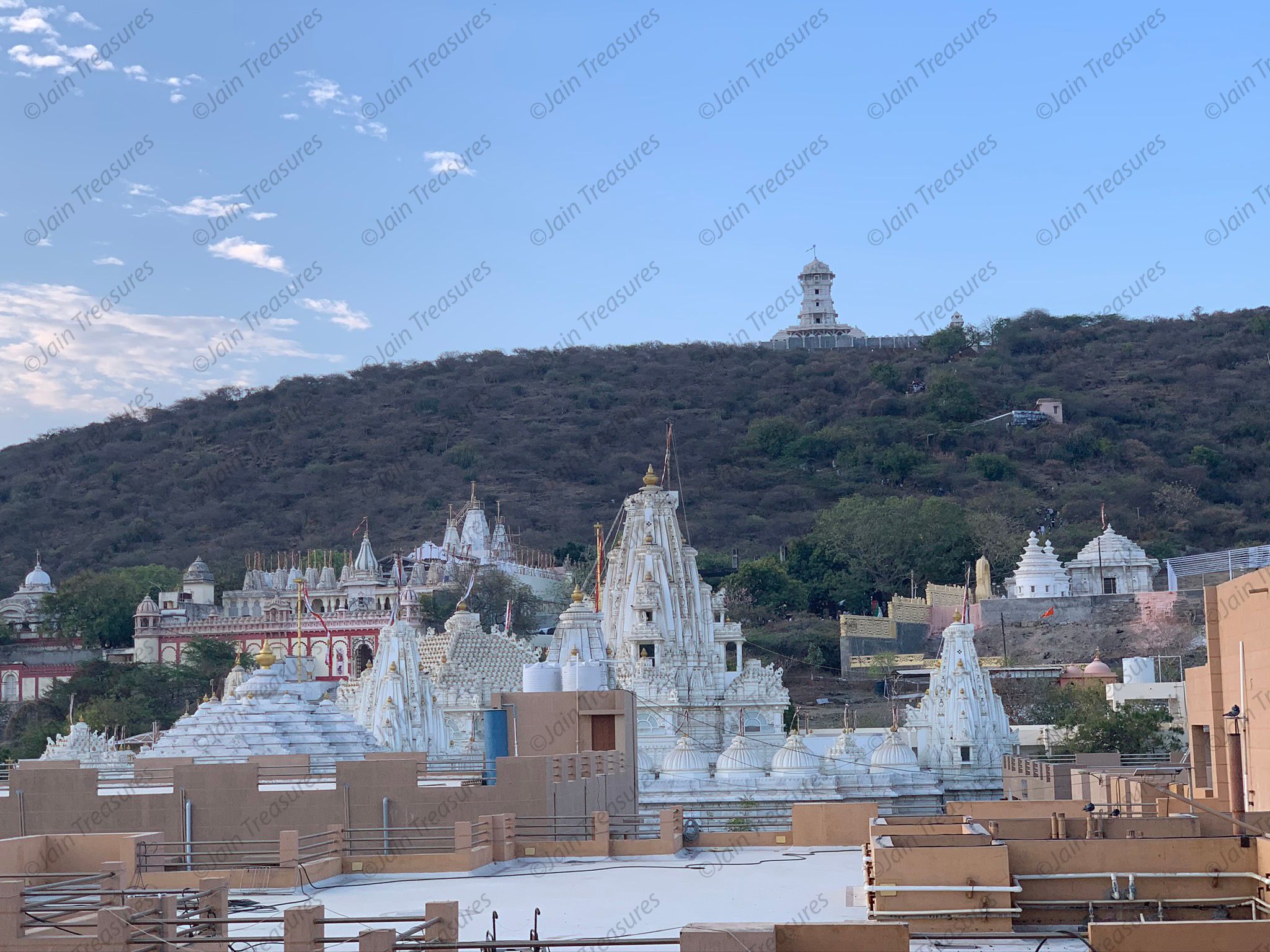
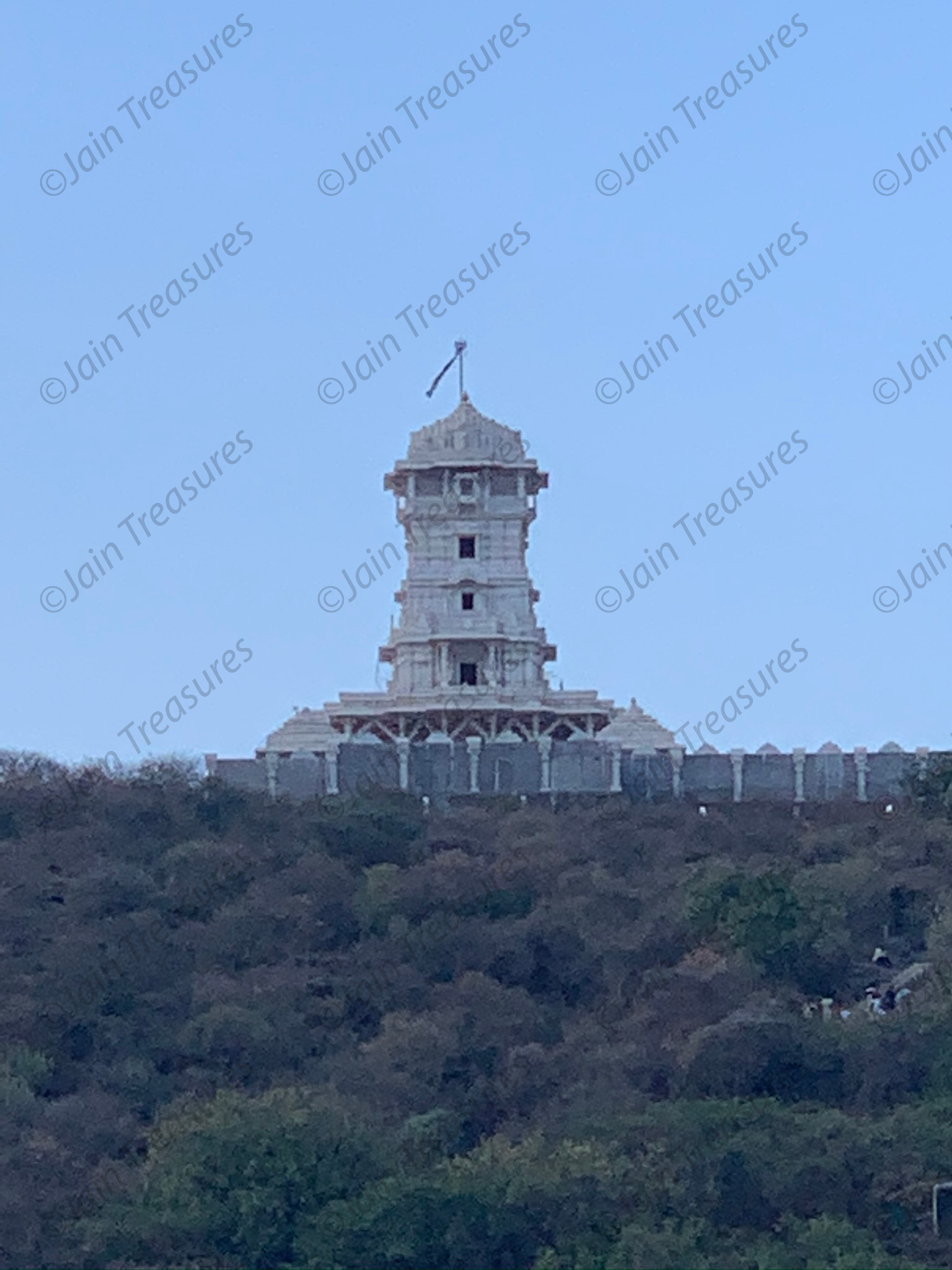

Saraswati Mata Mandir
Right at the foothills of Shatrunjay Mountain is a small shrine dedicated to the Goddess of learning, Saraswati Mata who is sitting on a goose. It was built in 1803.
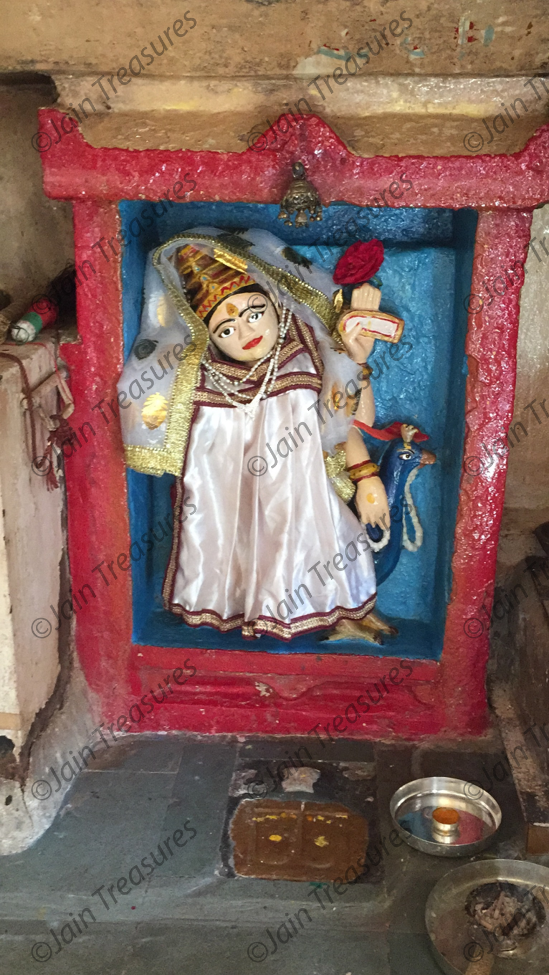
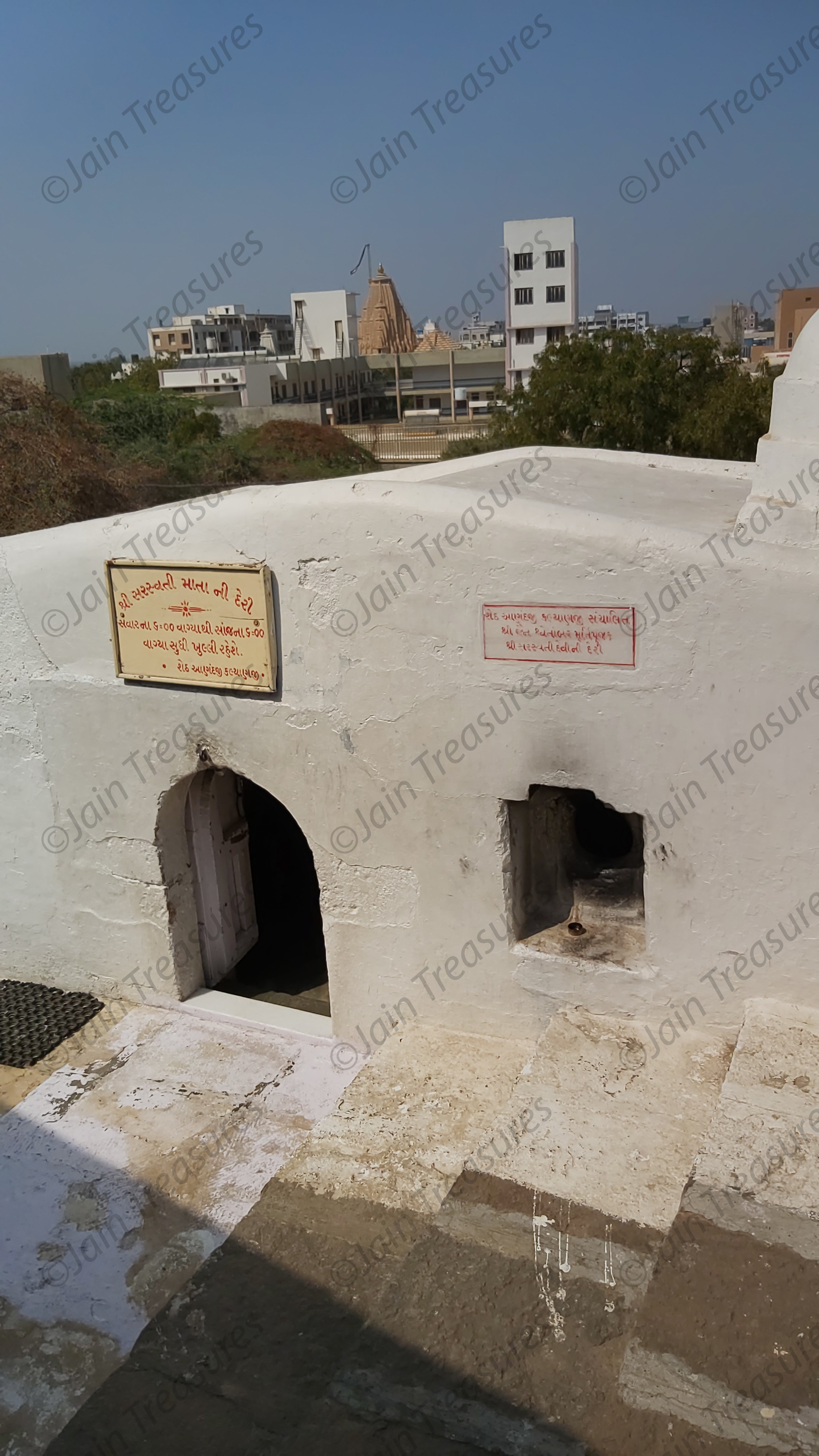
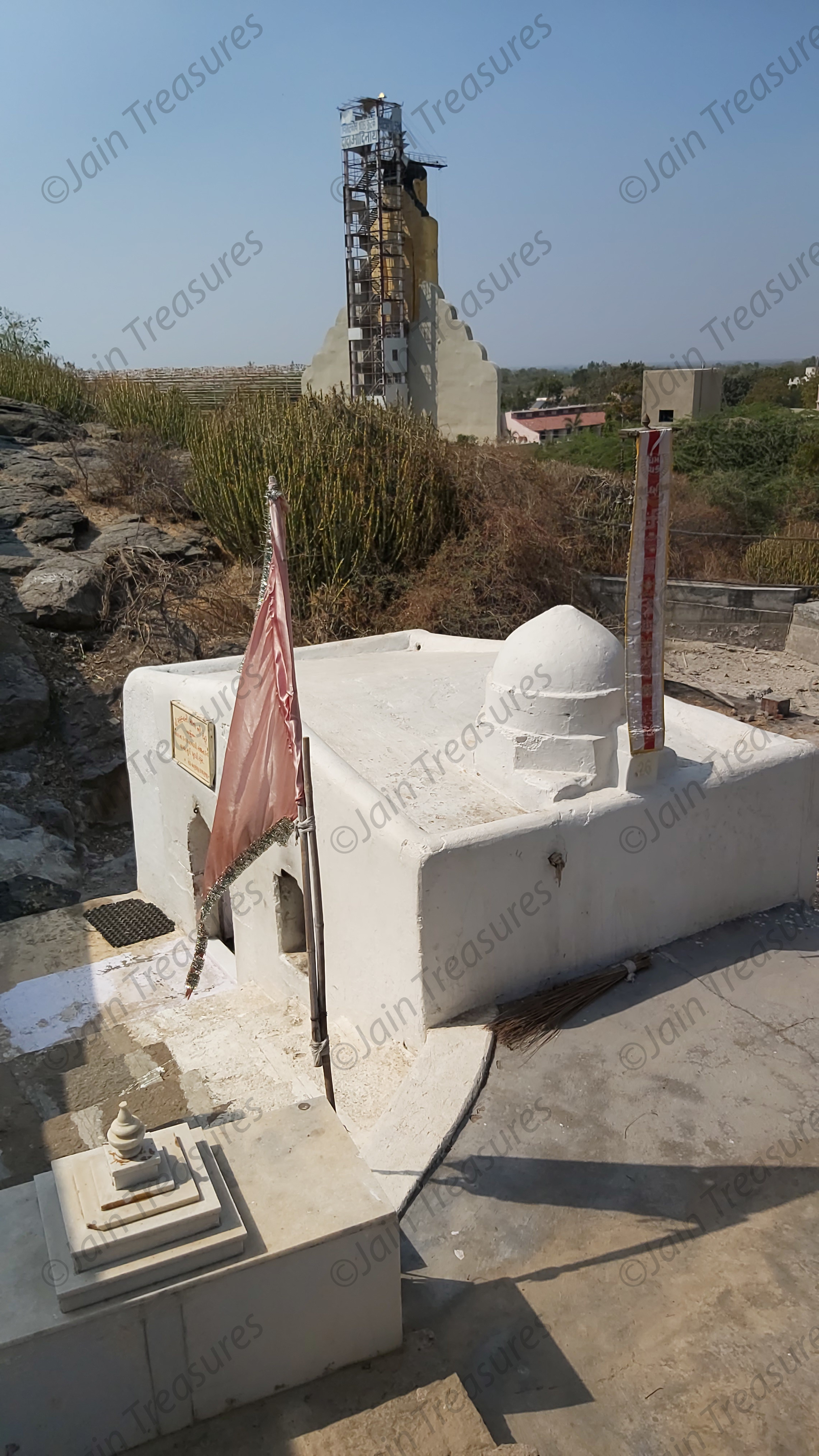
Gheti Nu Paag
Gheti Paag is the other end of Shatrunjay Mountain.
Lord Adeshwar is believed to have climbed the Shatrunjay Mountain 99 Purva times (according to Jain tenets, 1 purva = 84000 x 84000 years) which has led to the sanctity of this holy land. Thus, many devout and blessed souls do navanu (perform the pilgrimage 99 times). It is possible to do 2 yatras in a day by climbing the conventional route from taleti, descend to Gheti Paag and then return to taleti. Aambad, Udayan Mantri’s son, is thought to have built a temple with Lord Adeshwar’s pious feet at Gheti Paag around 1150AD.
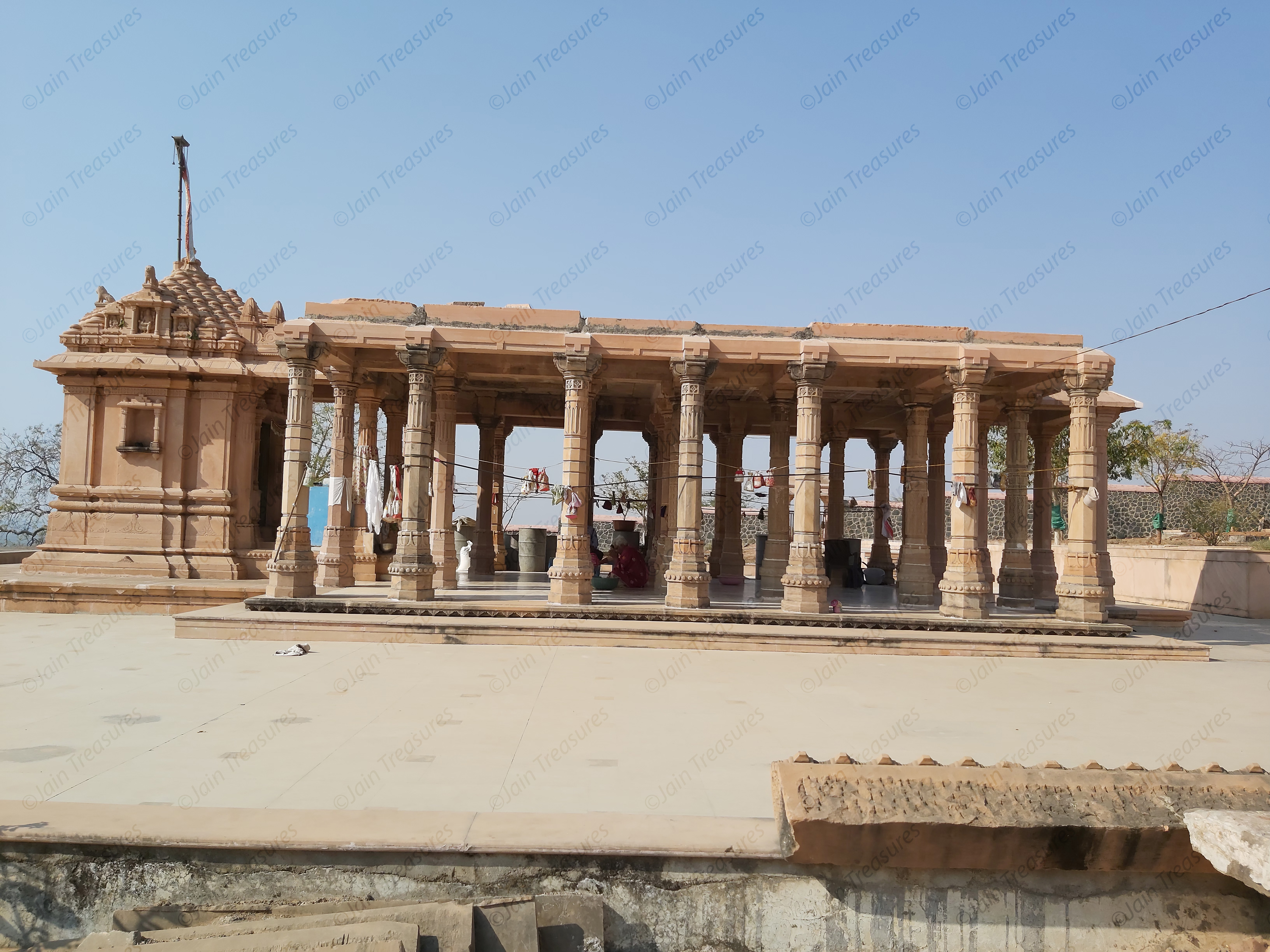
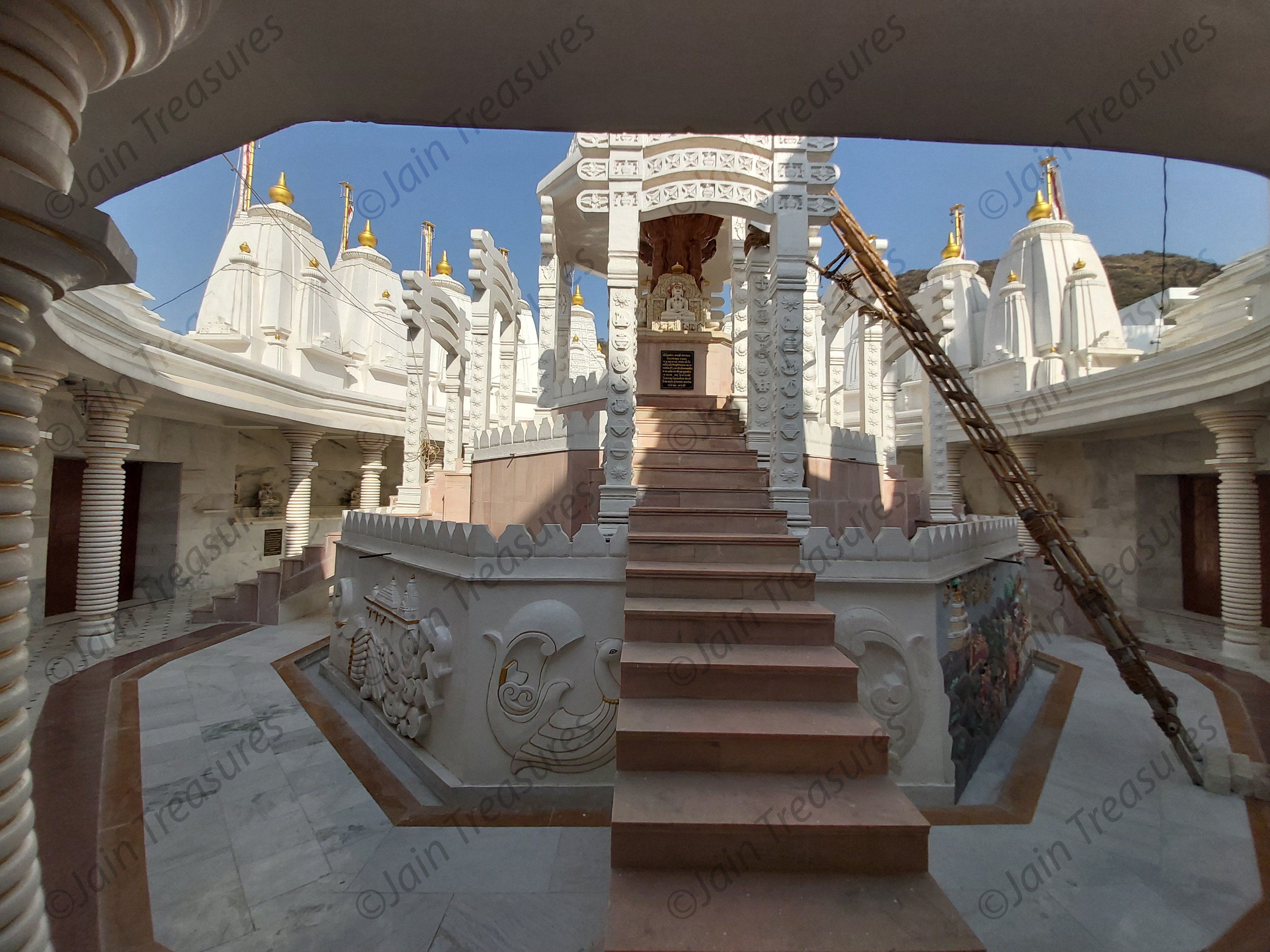
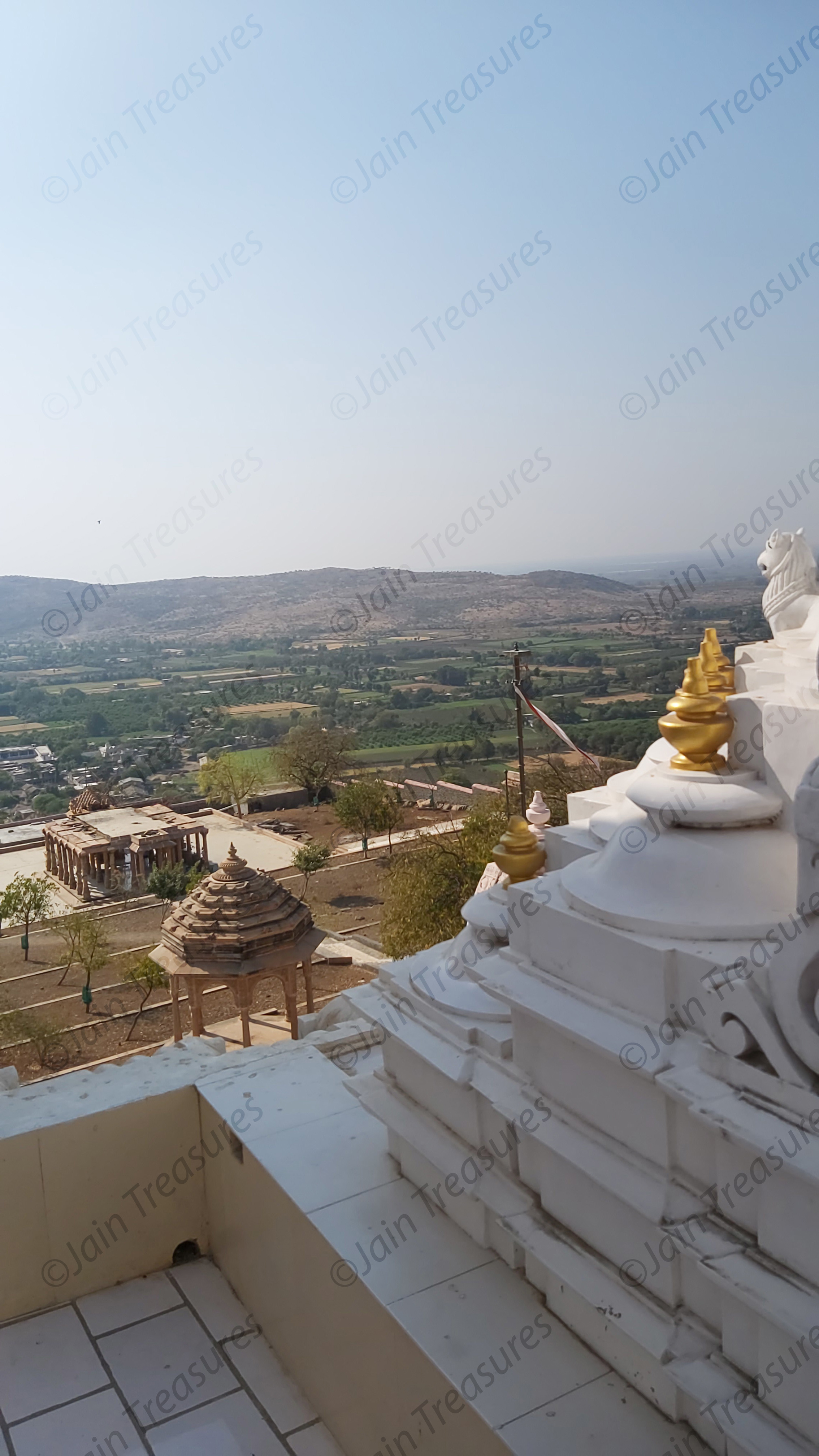

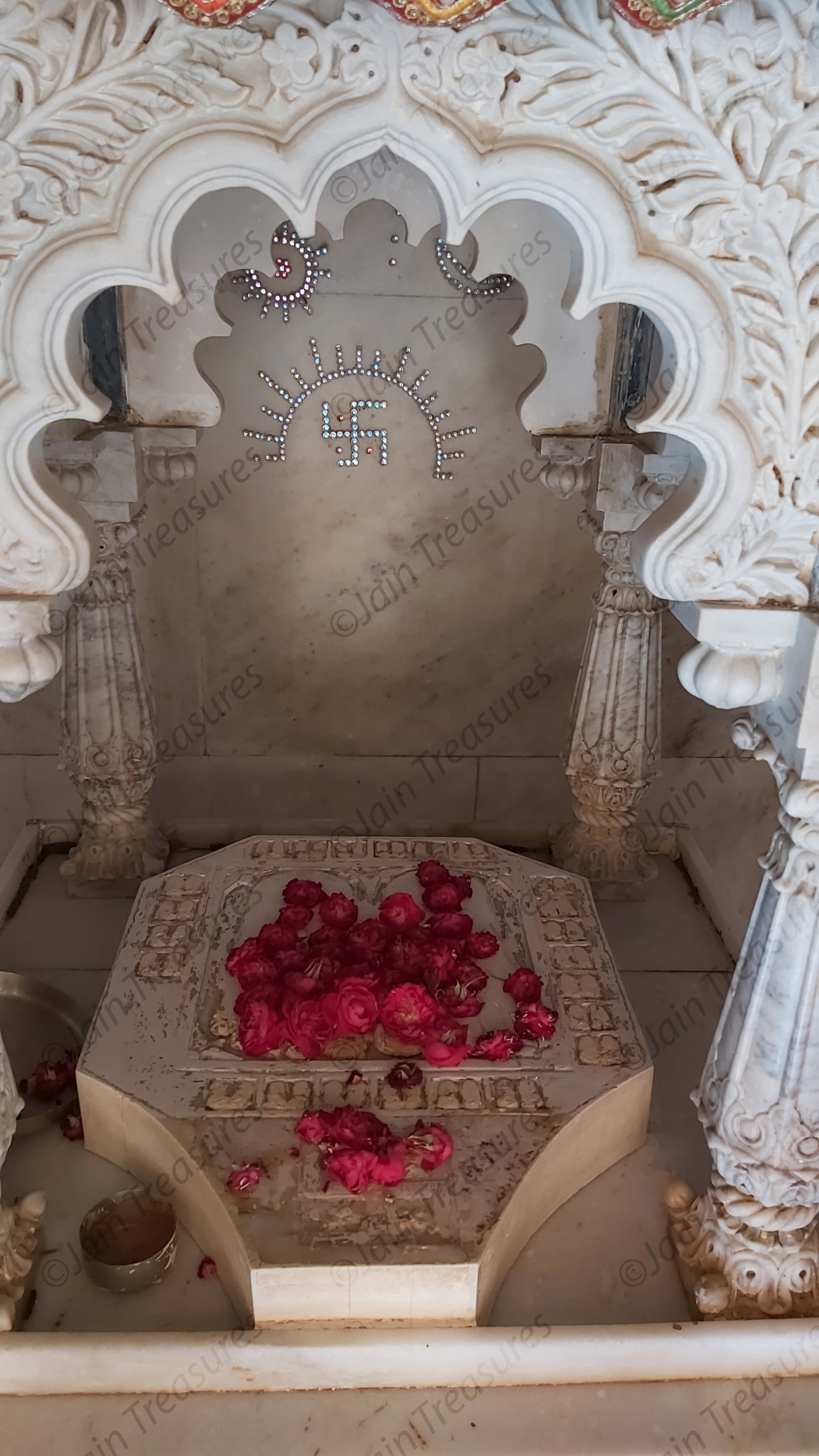
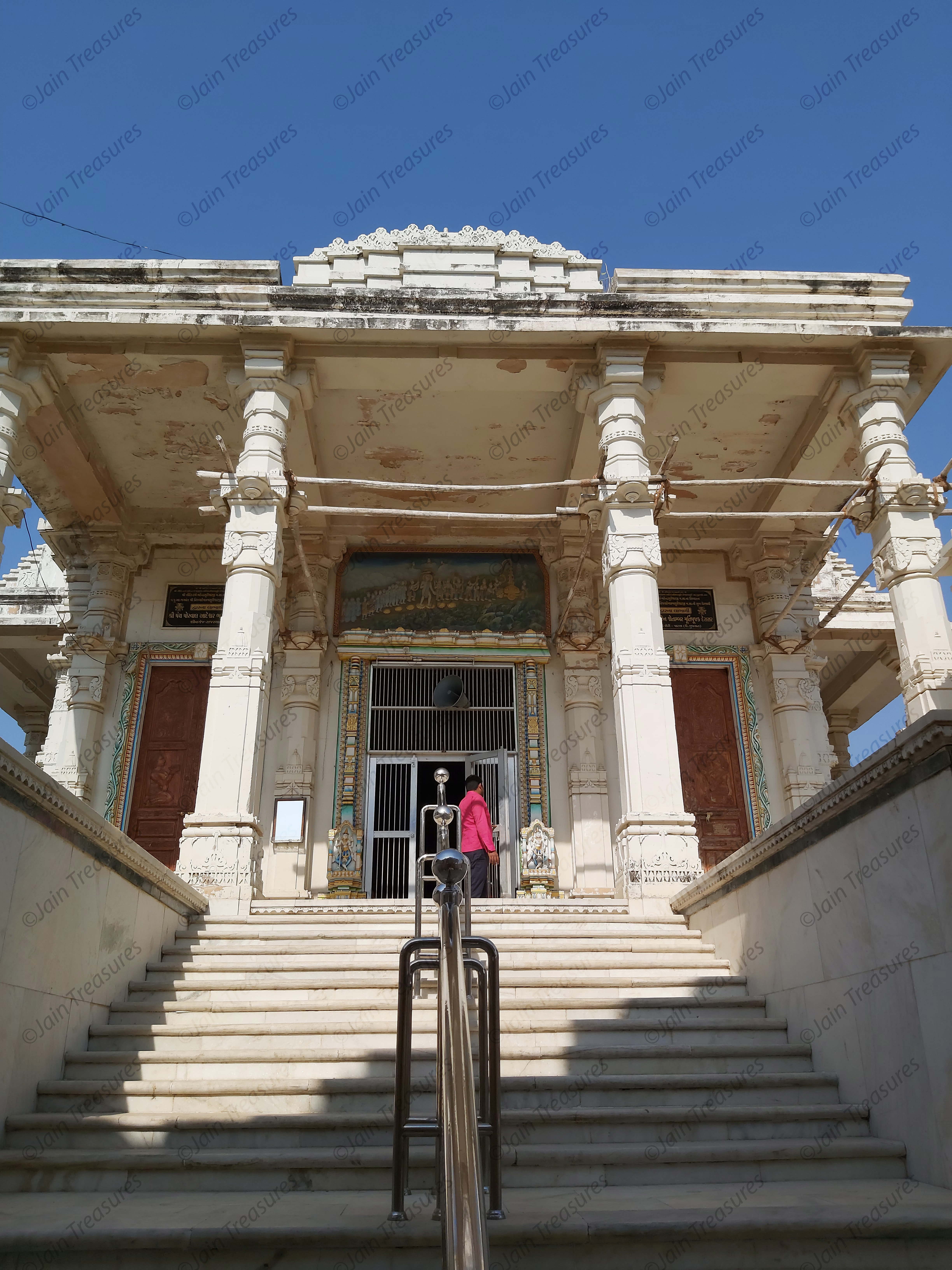
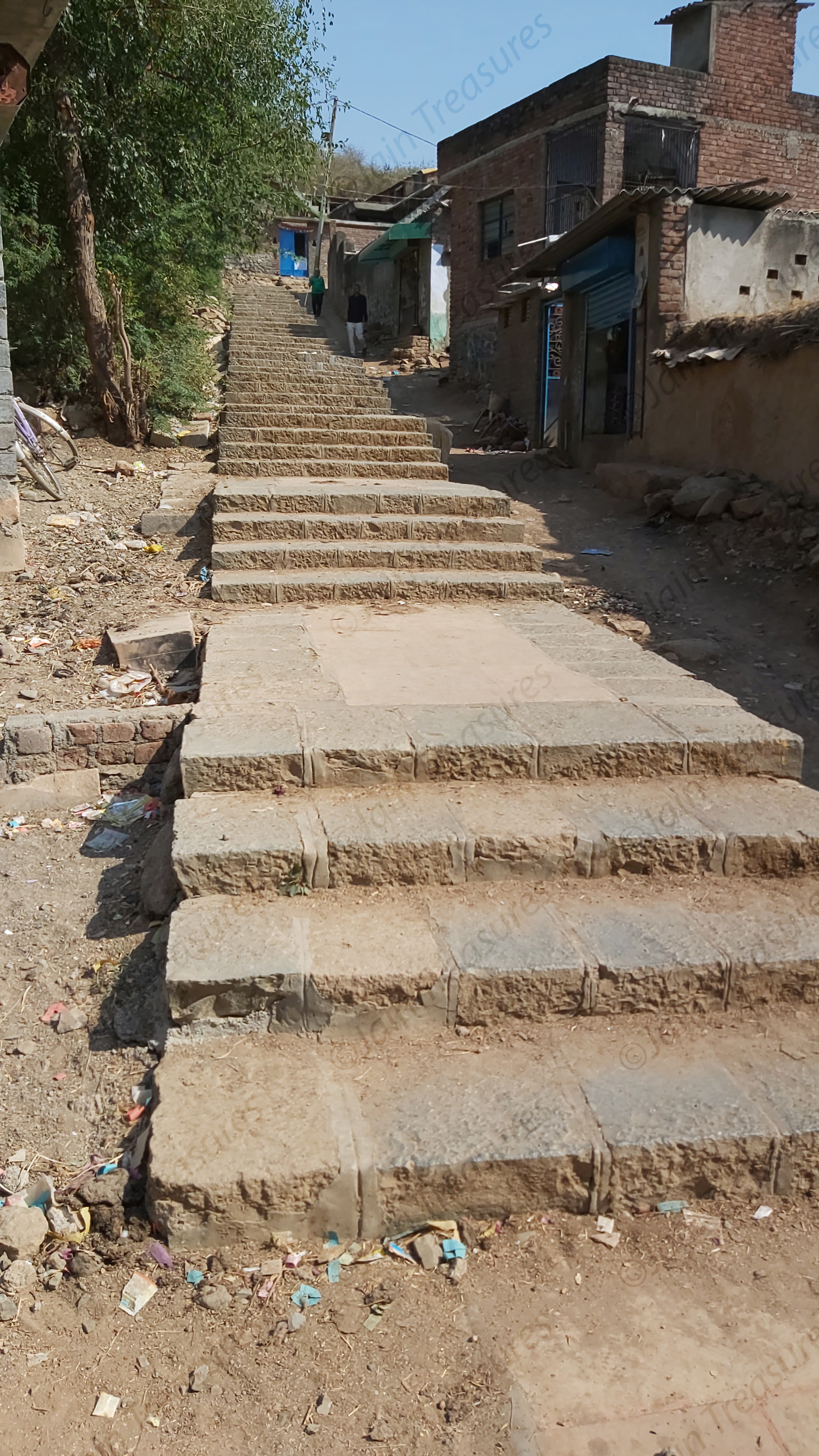
References:
1. Internet
2. YouTube video by Dr. Saurabh Shah
3. Palitana Renovations
4. Story of Bahad Mantri in Gujarati
5. Anandji Kalyanji Pedhi website
